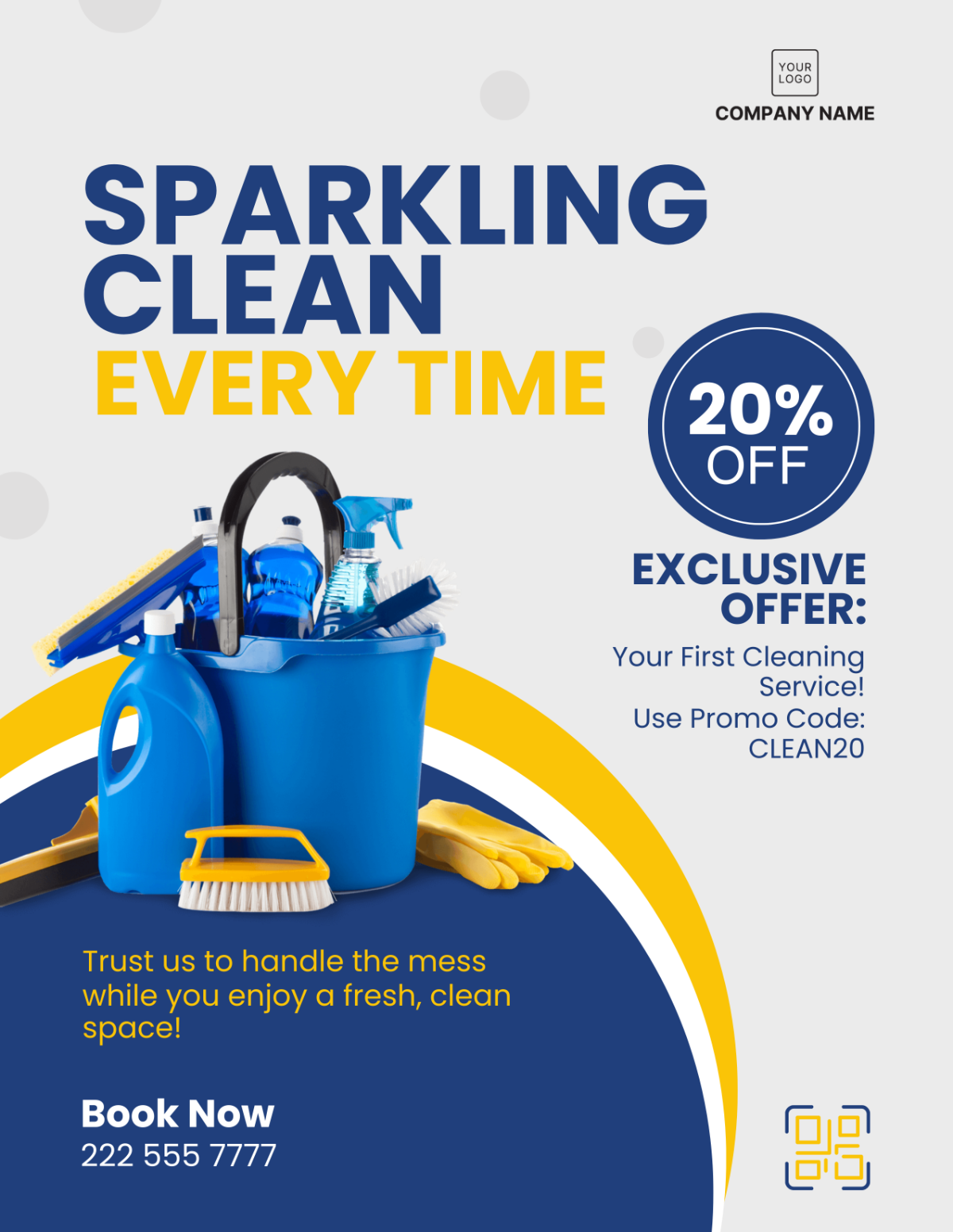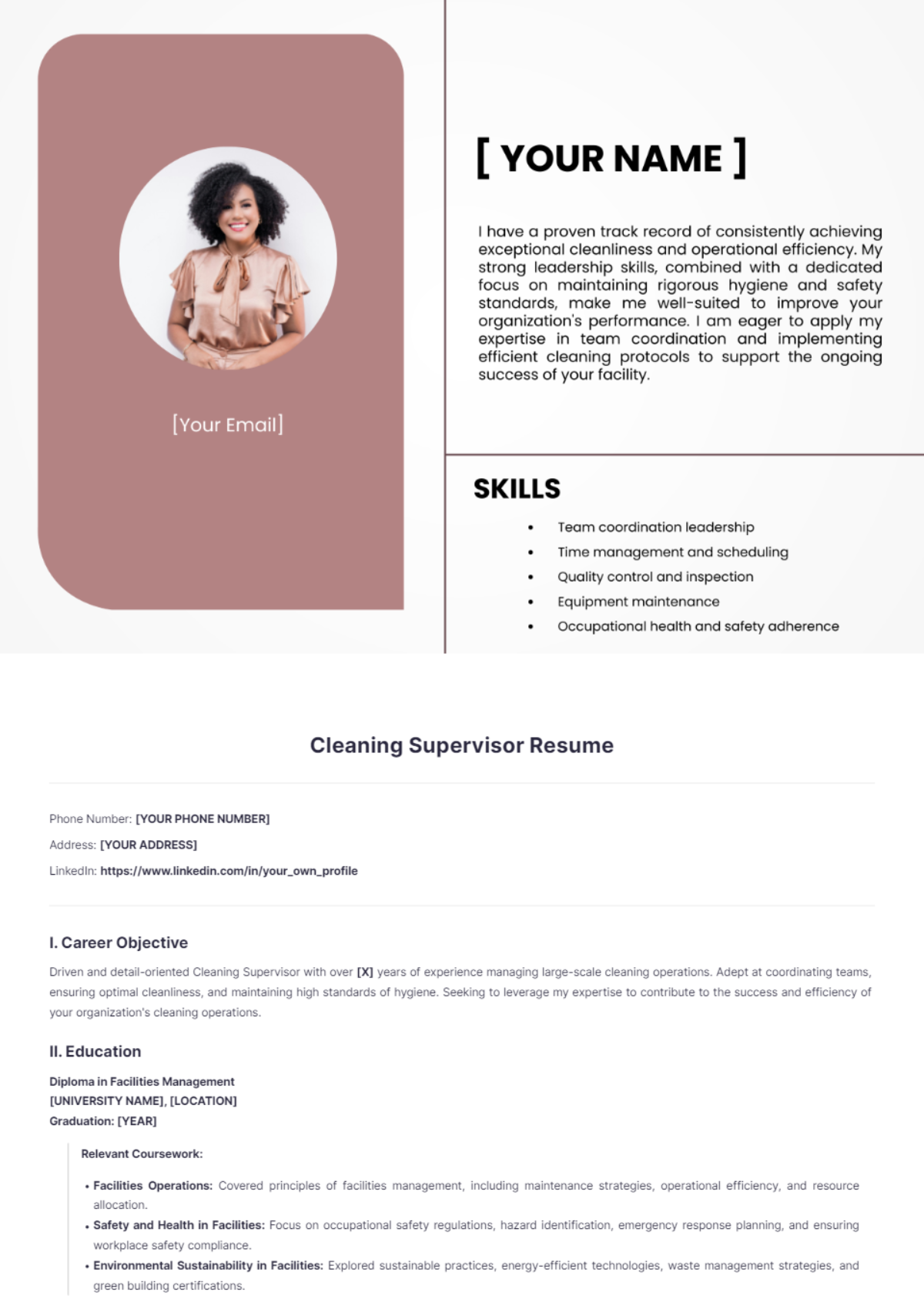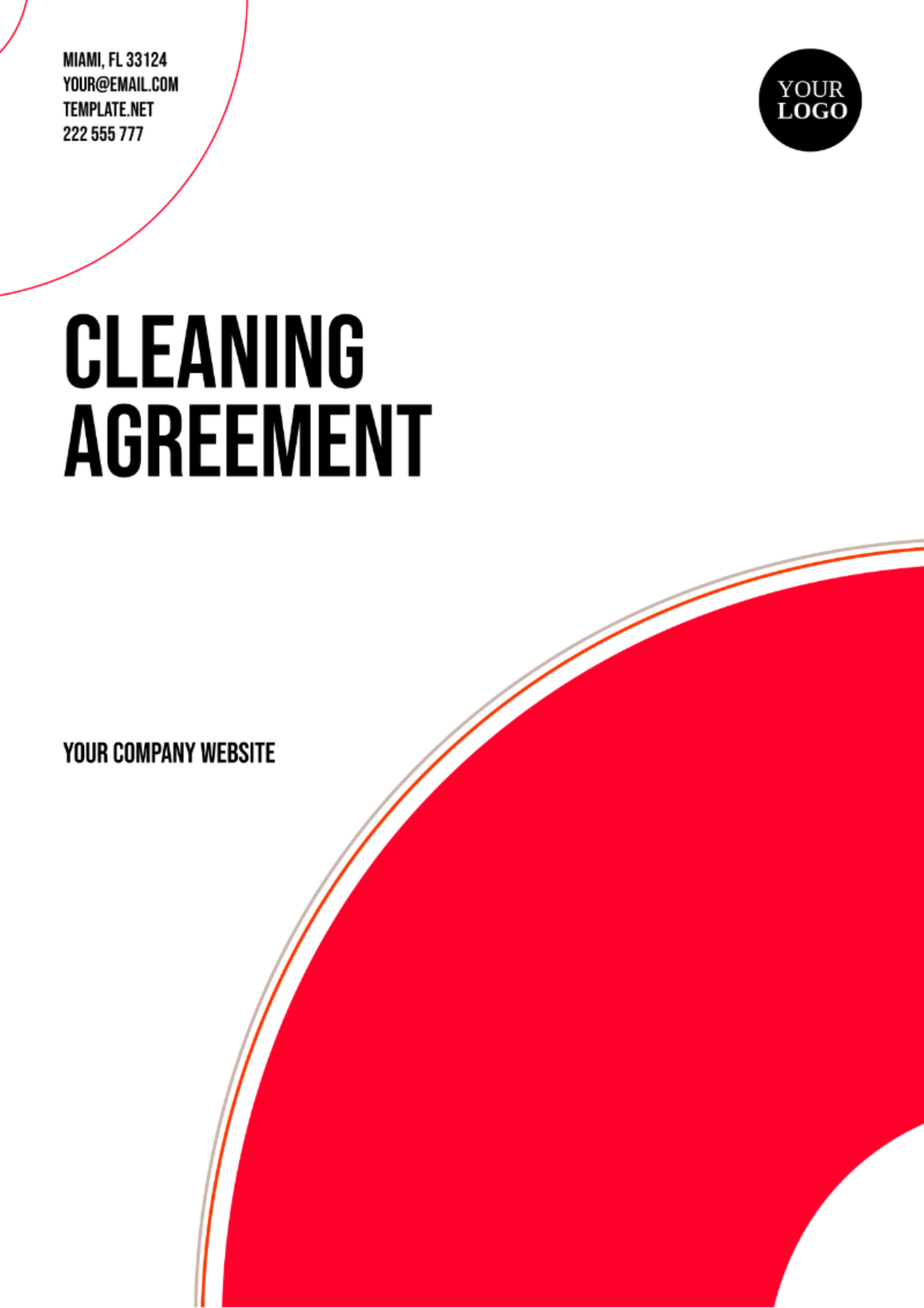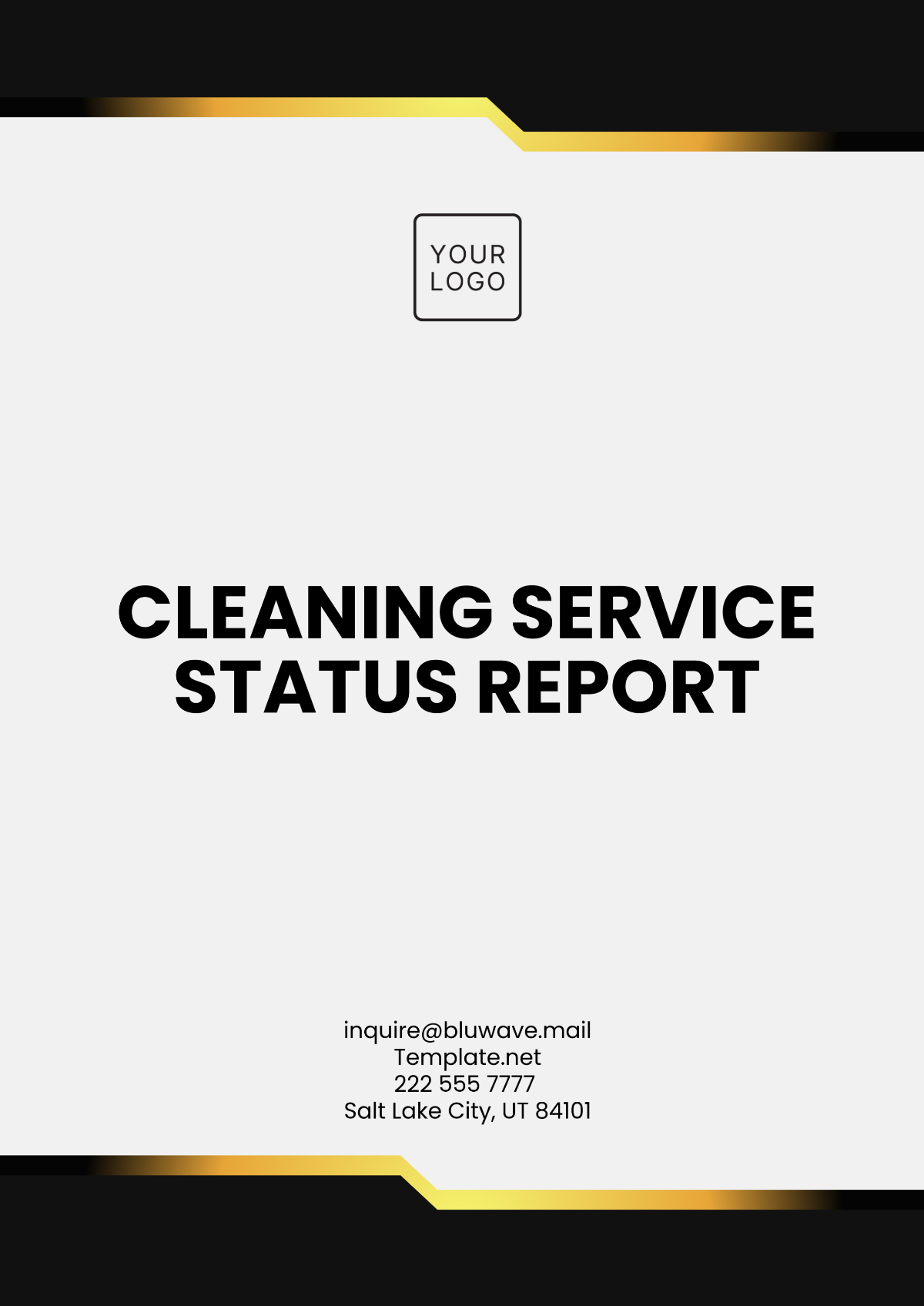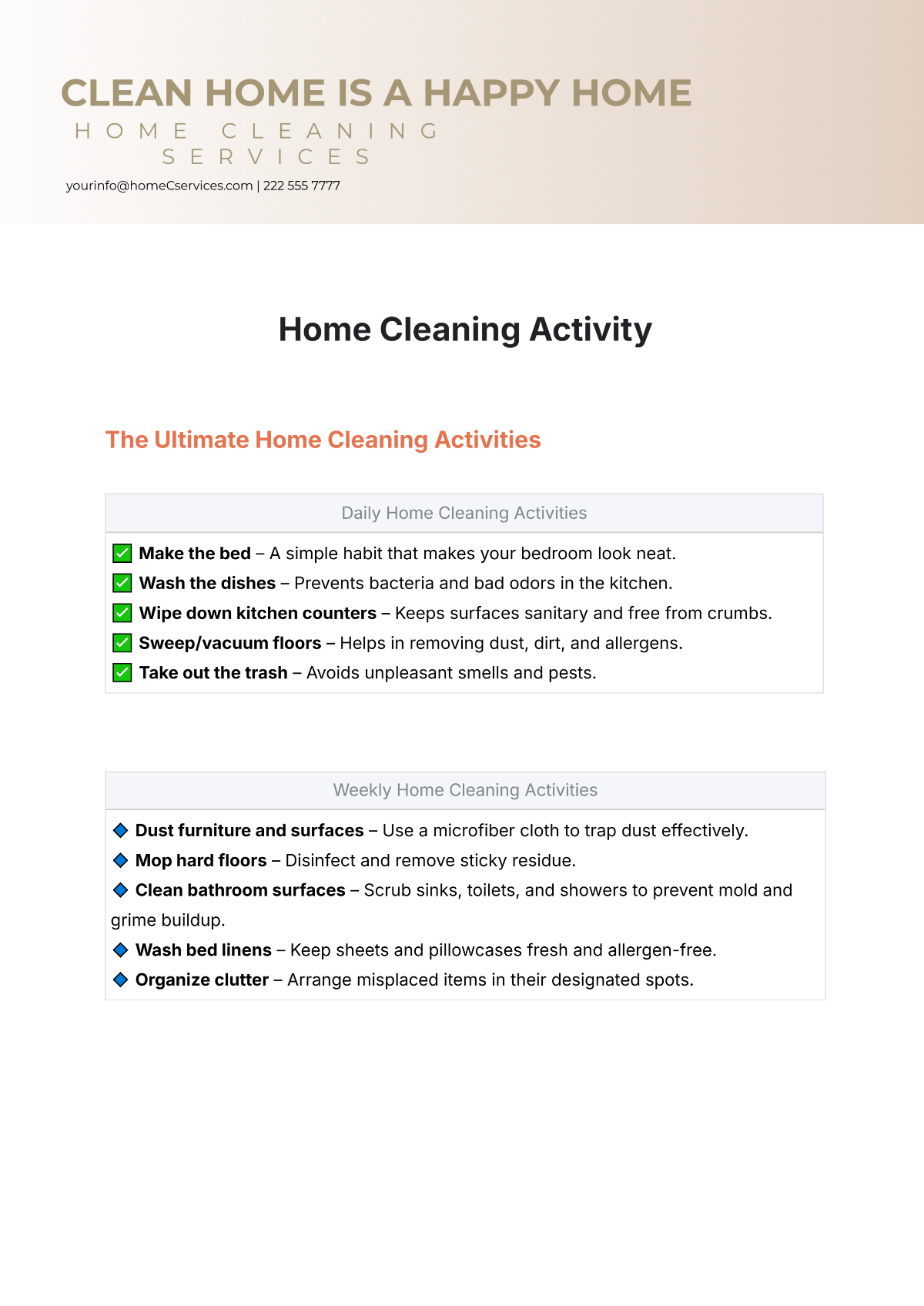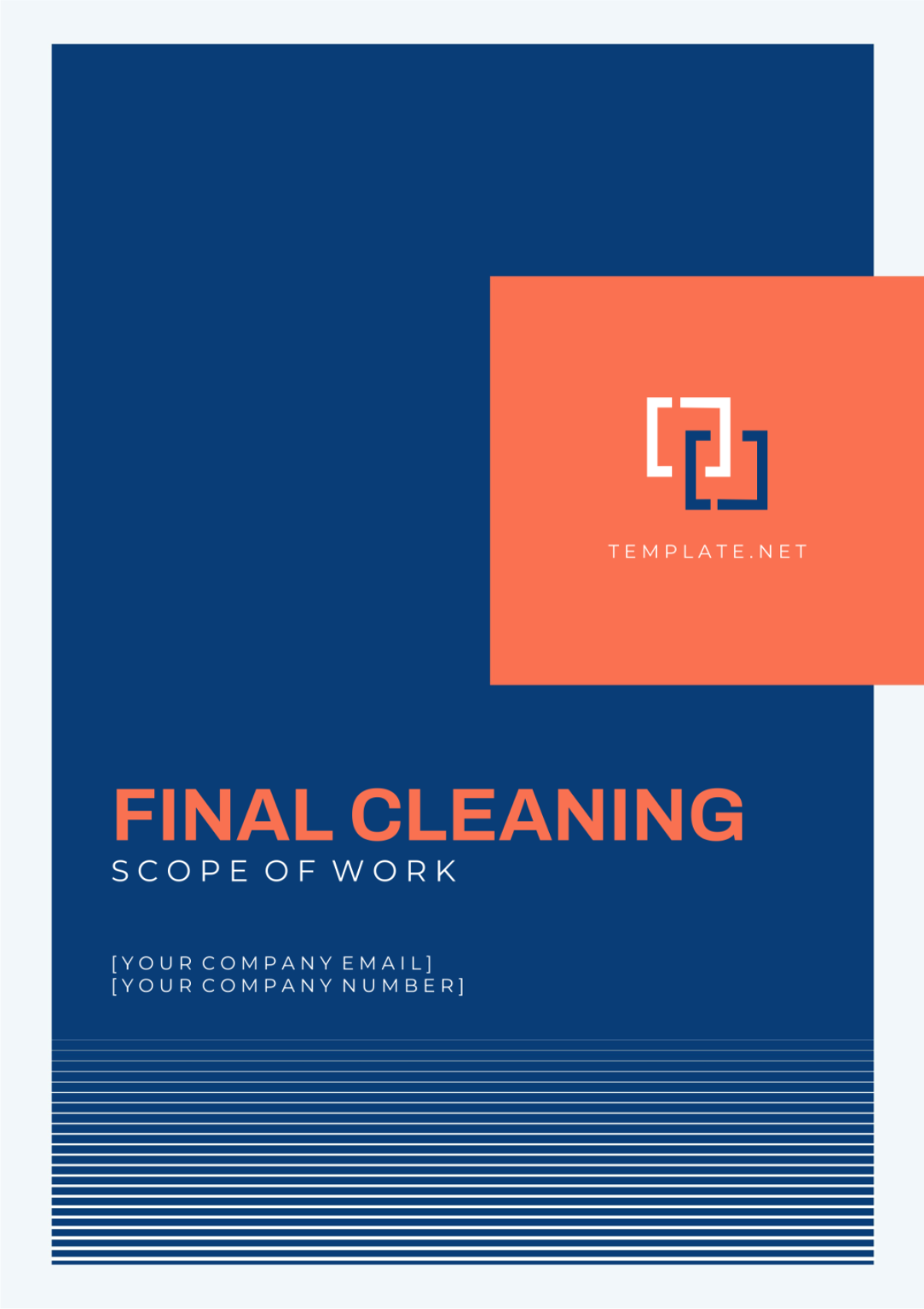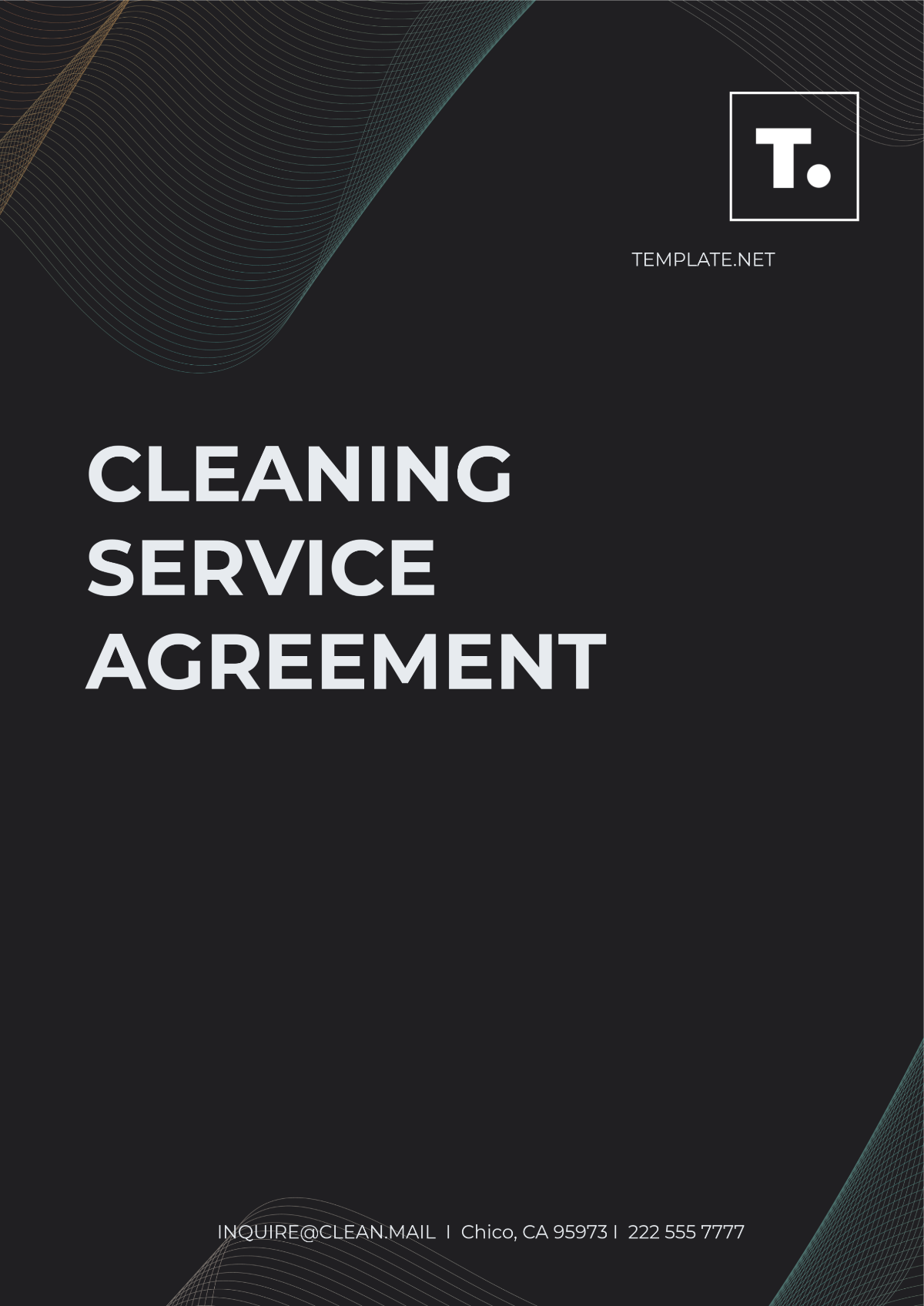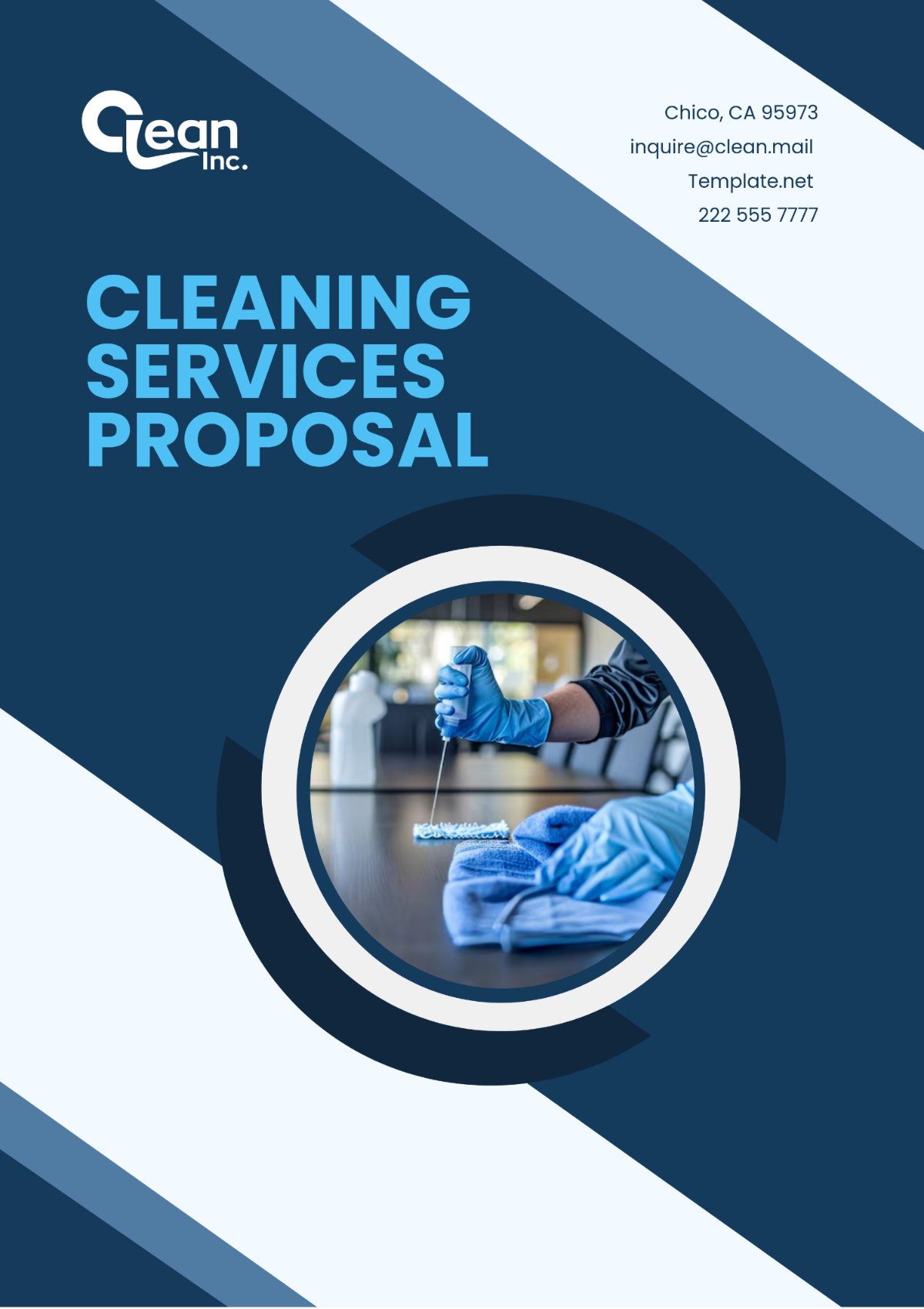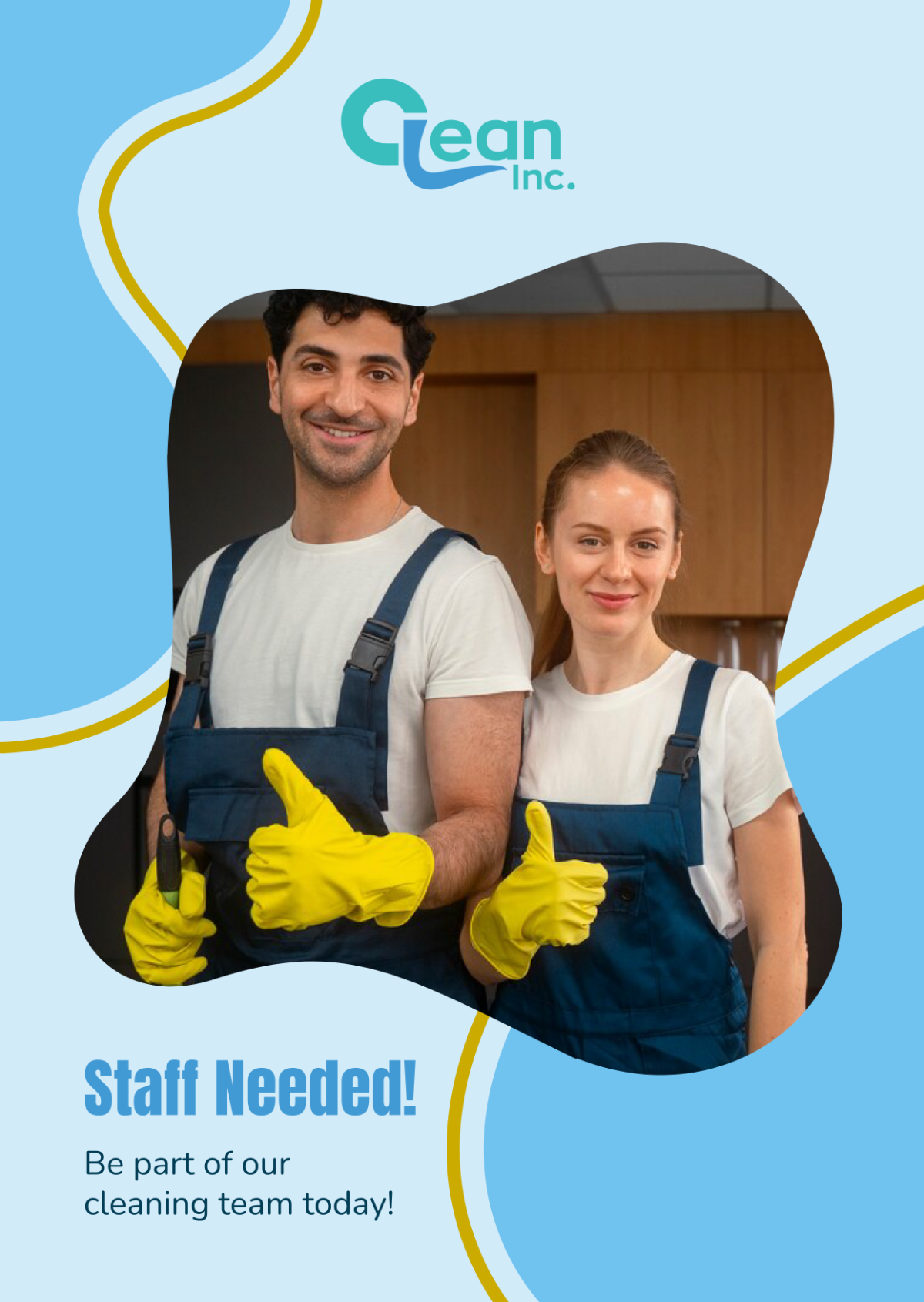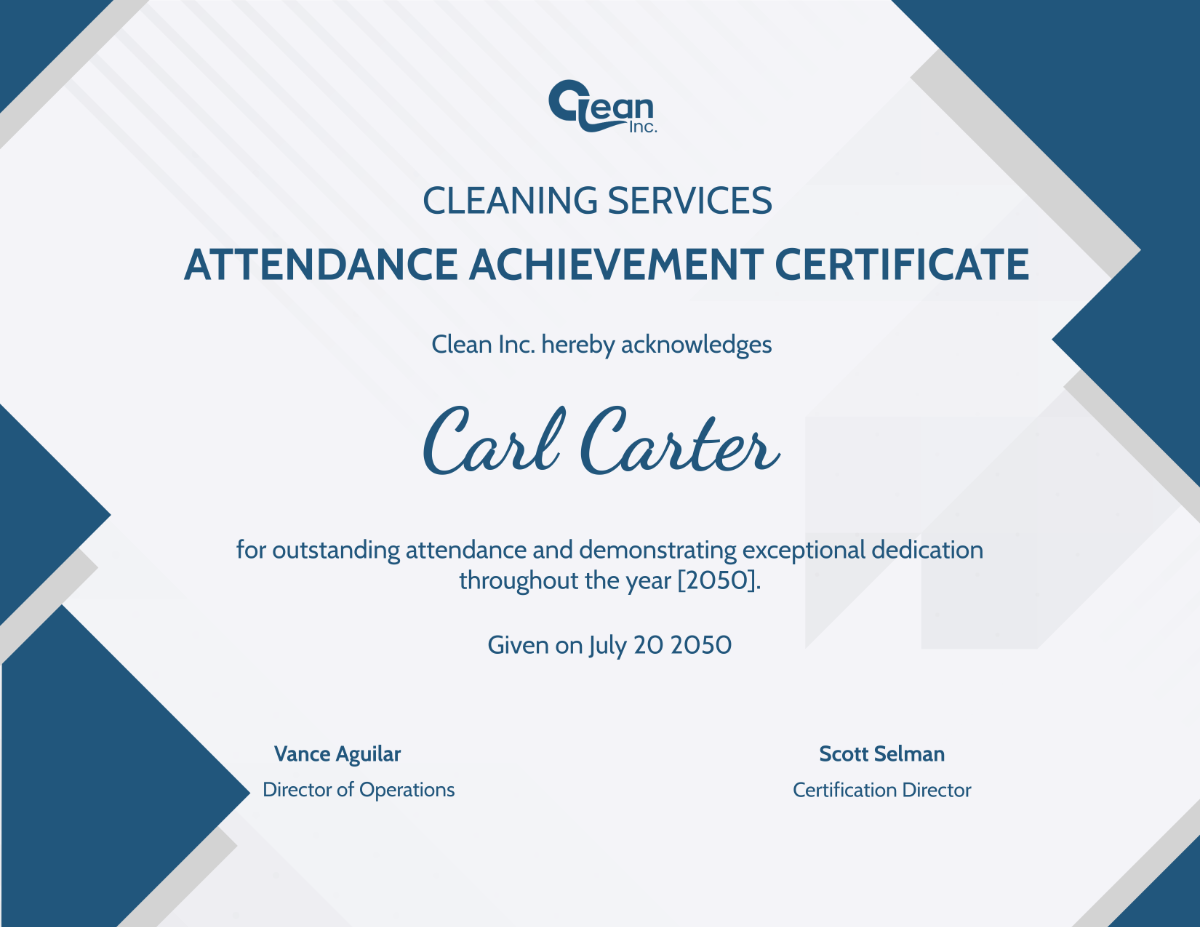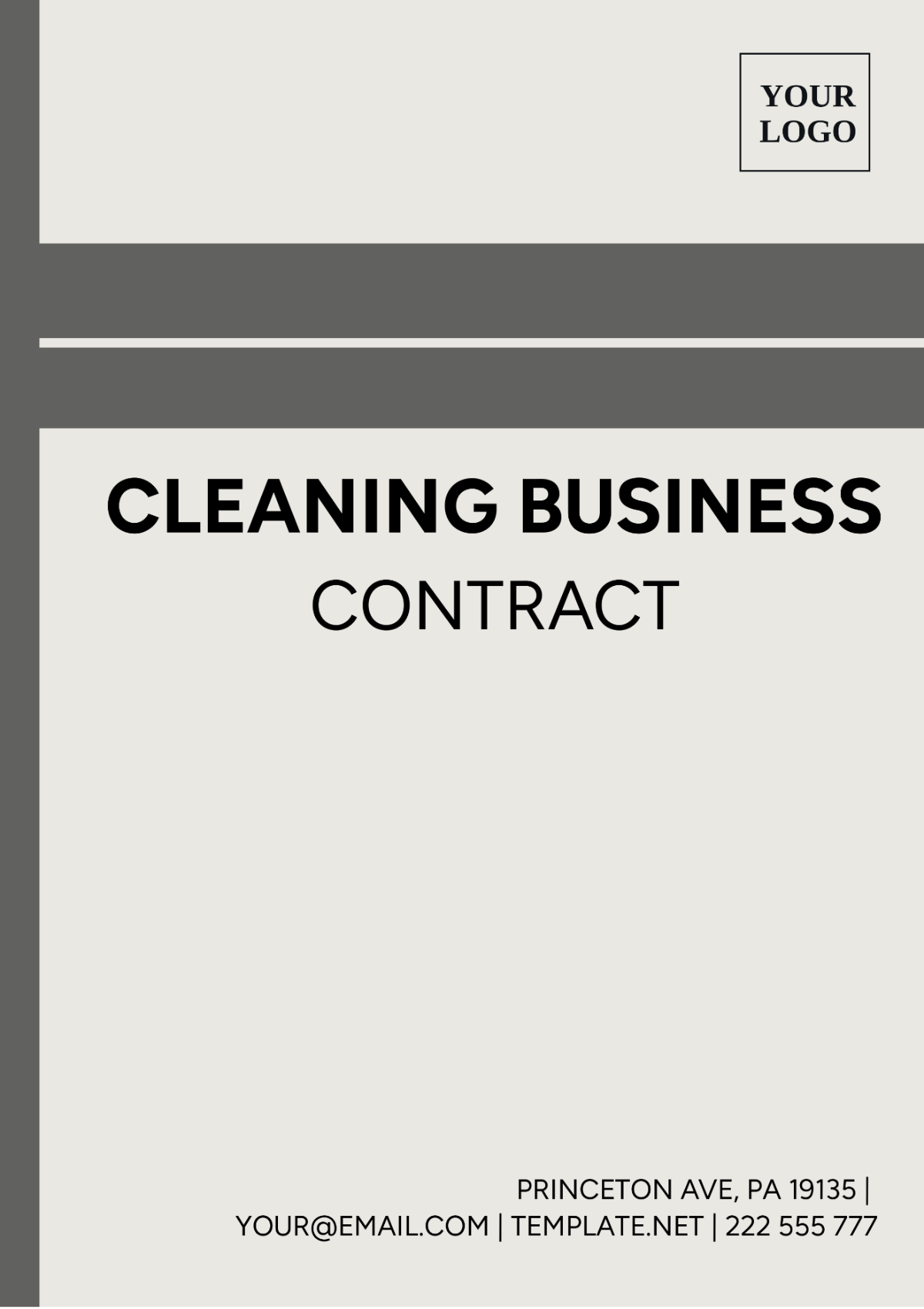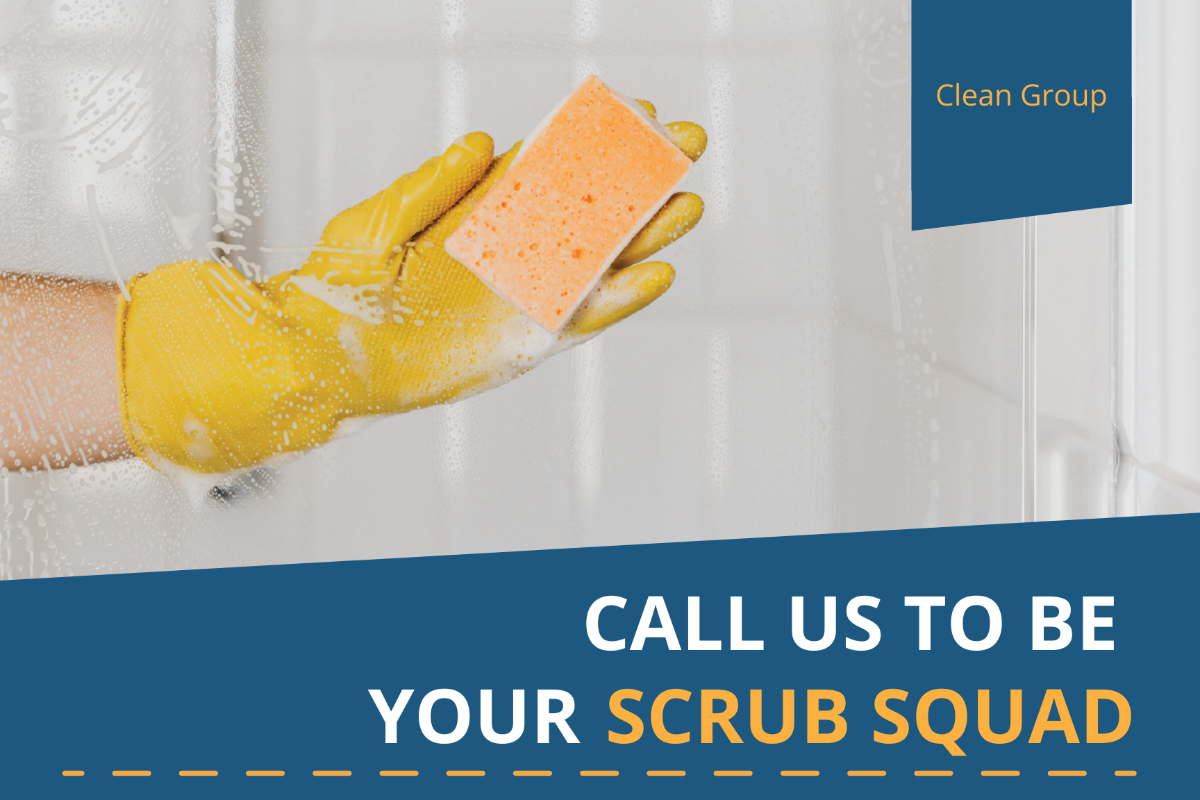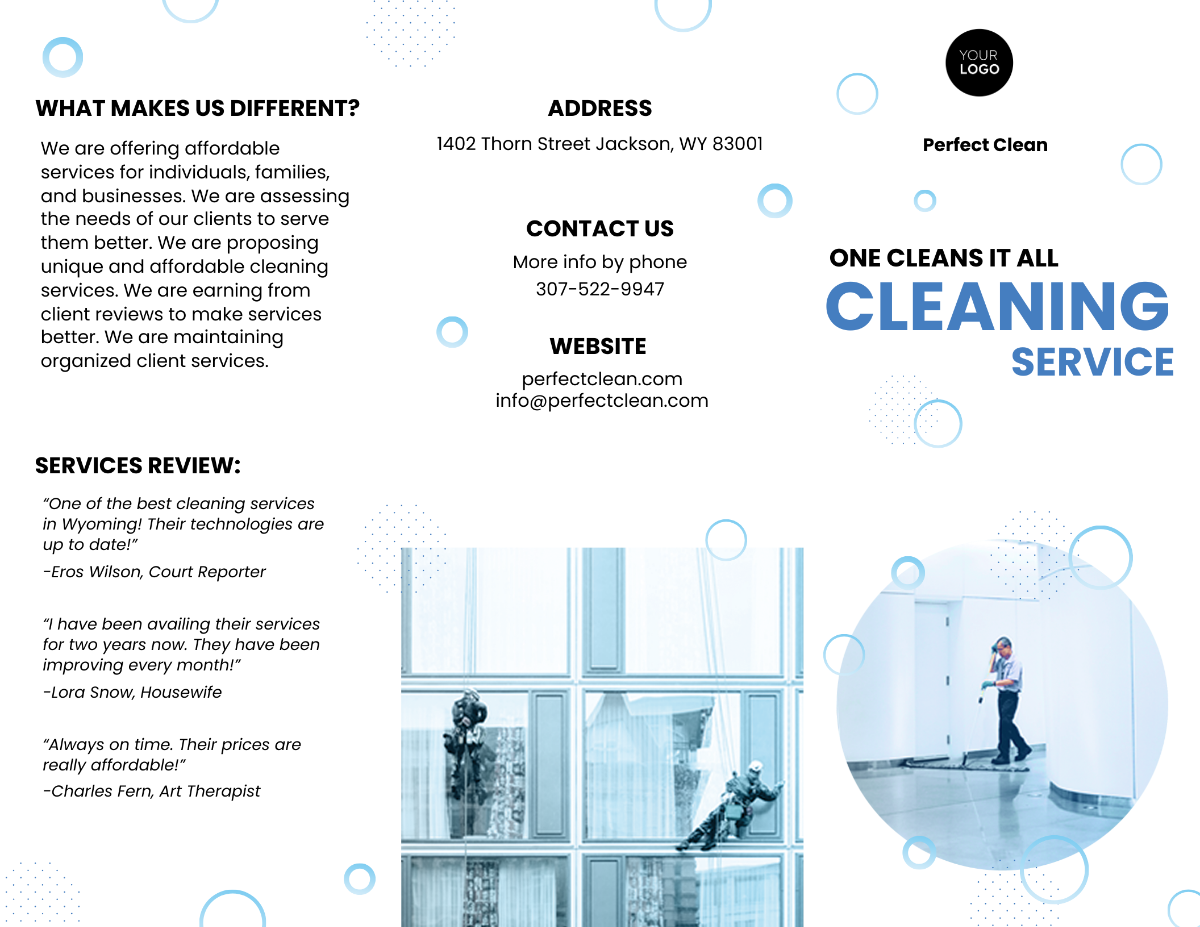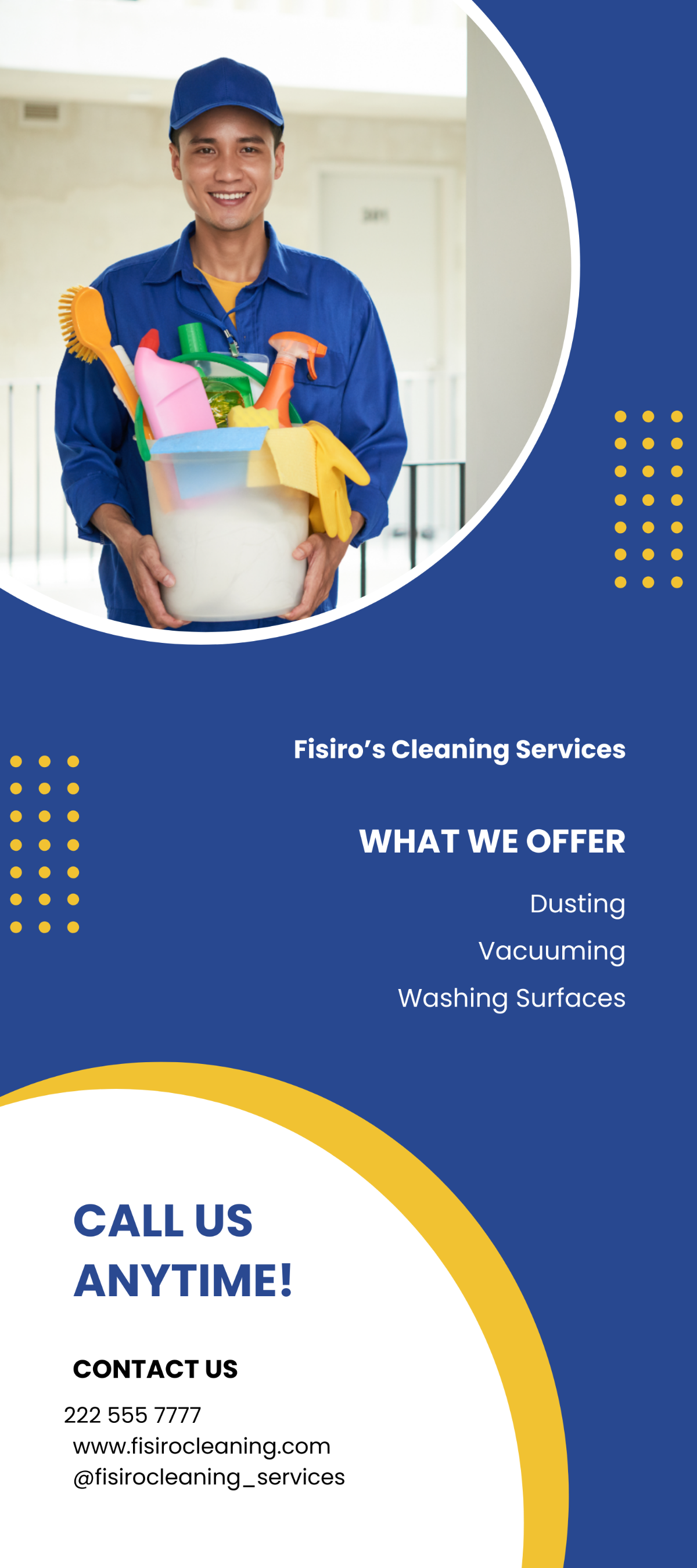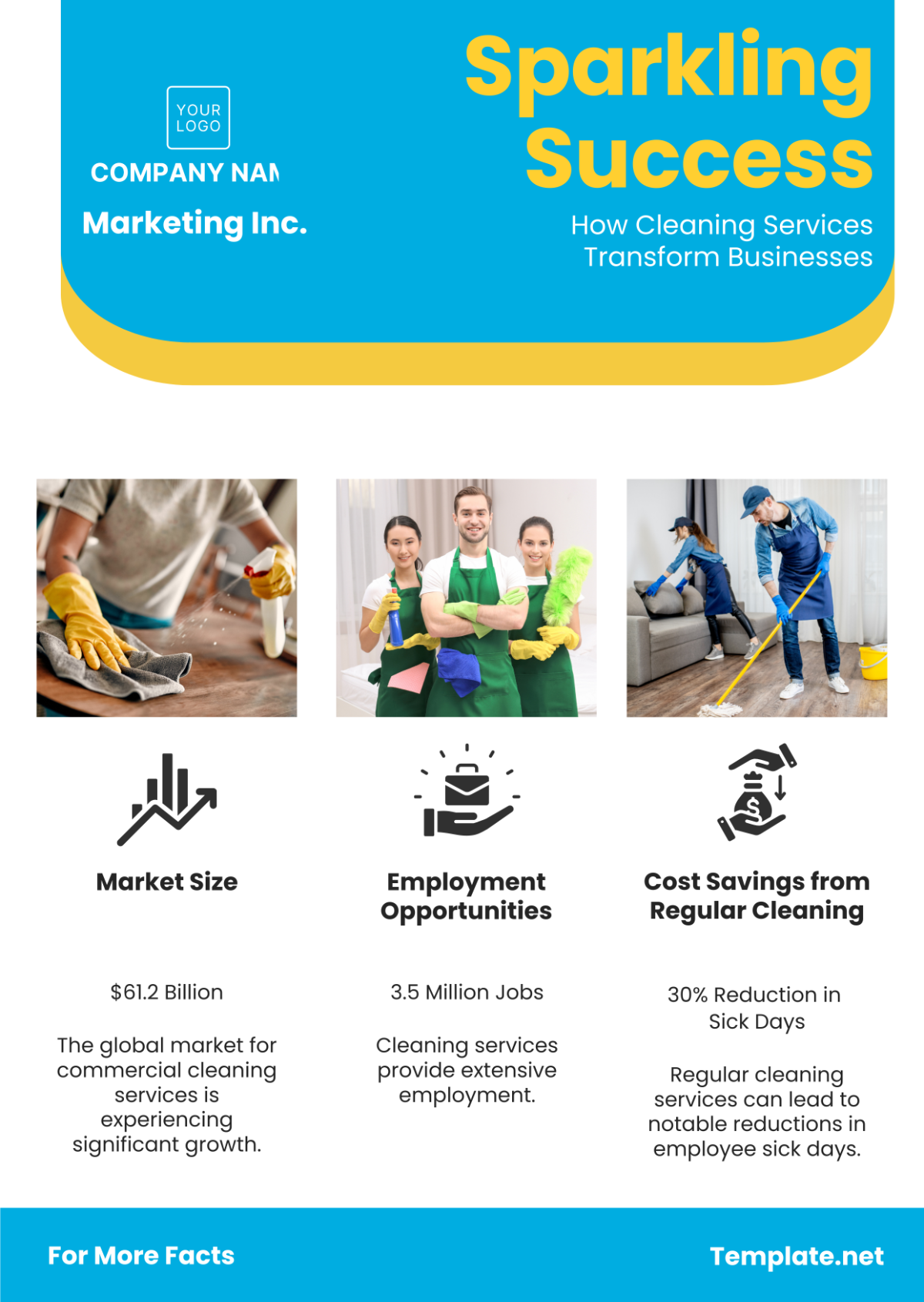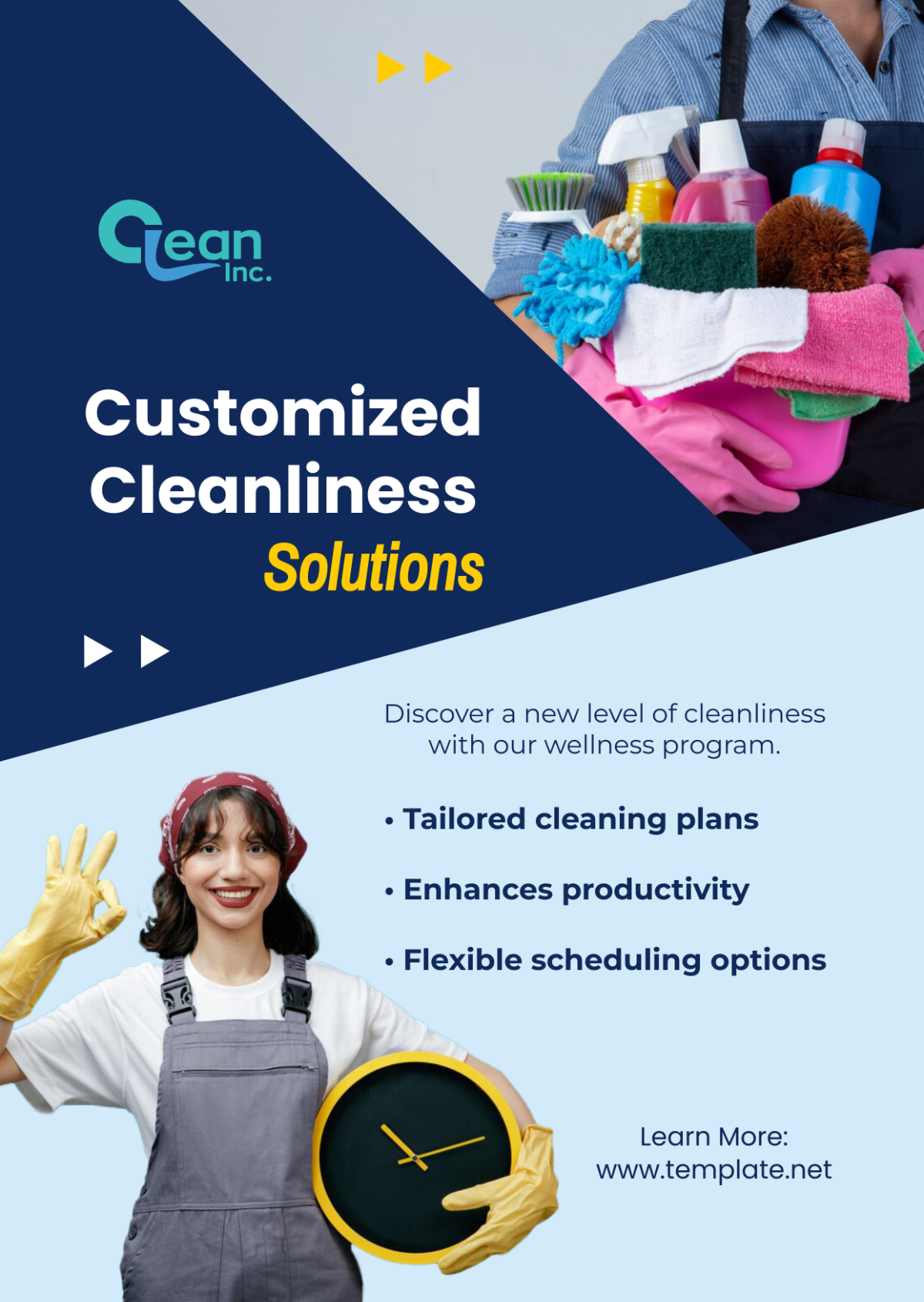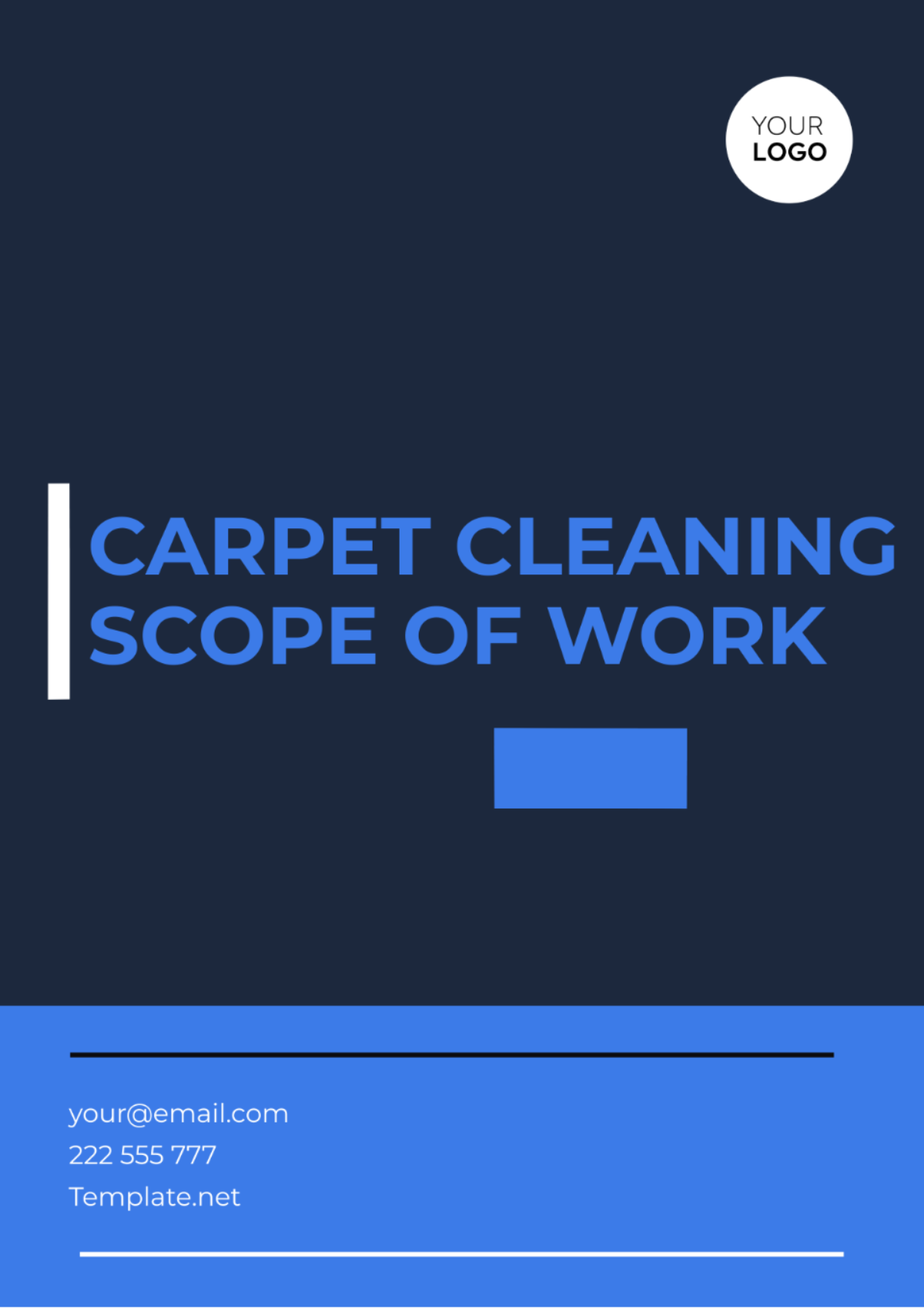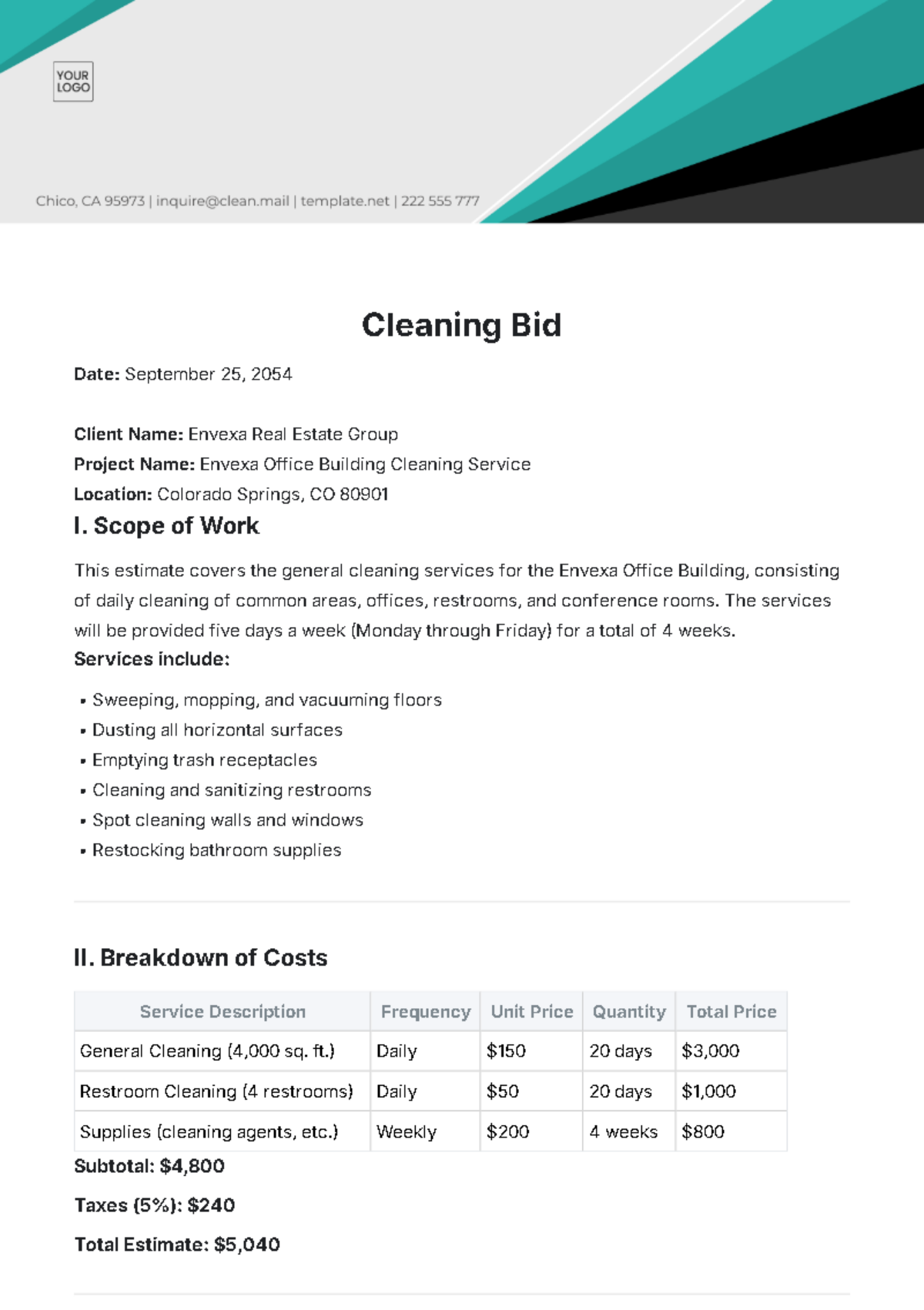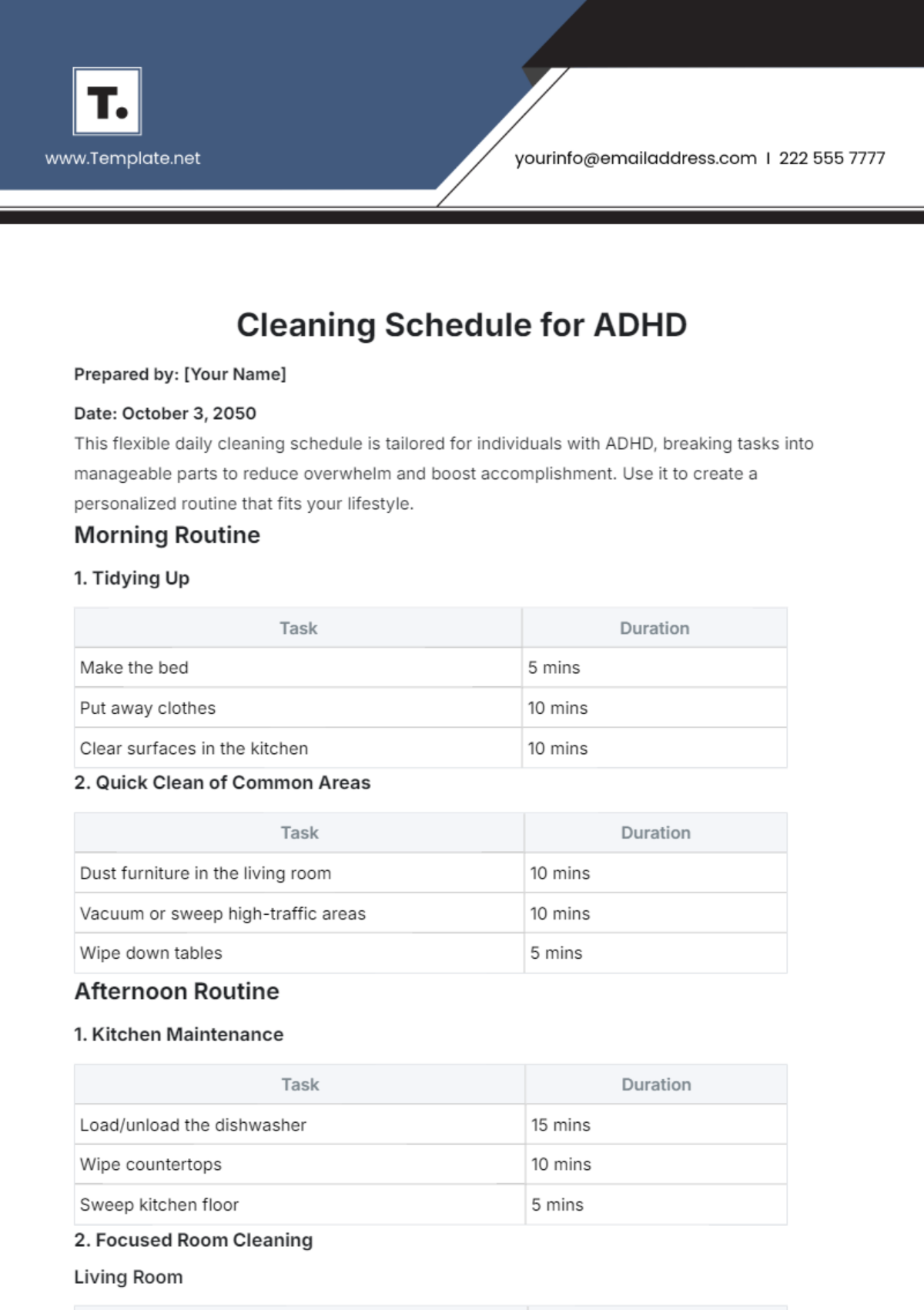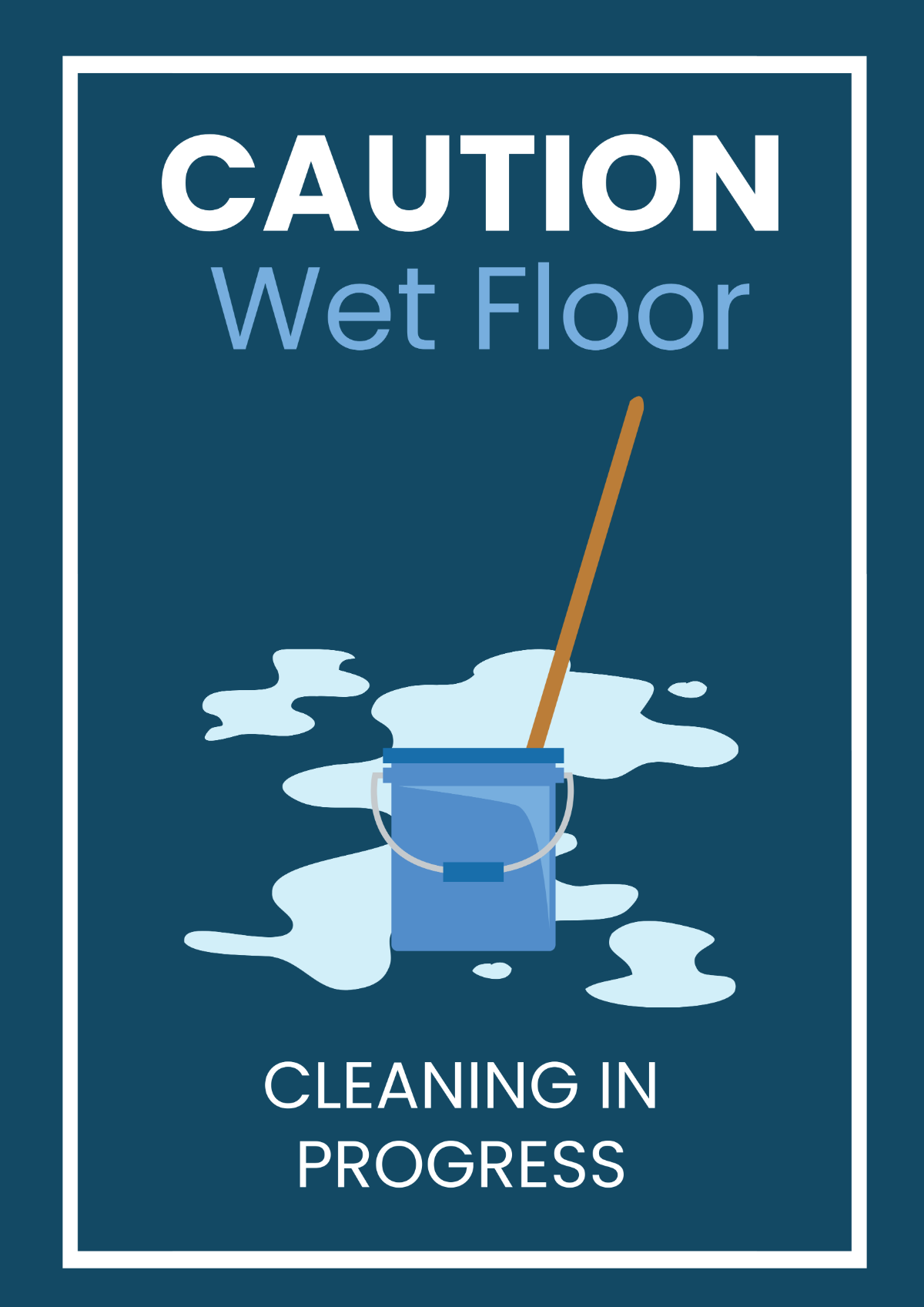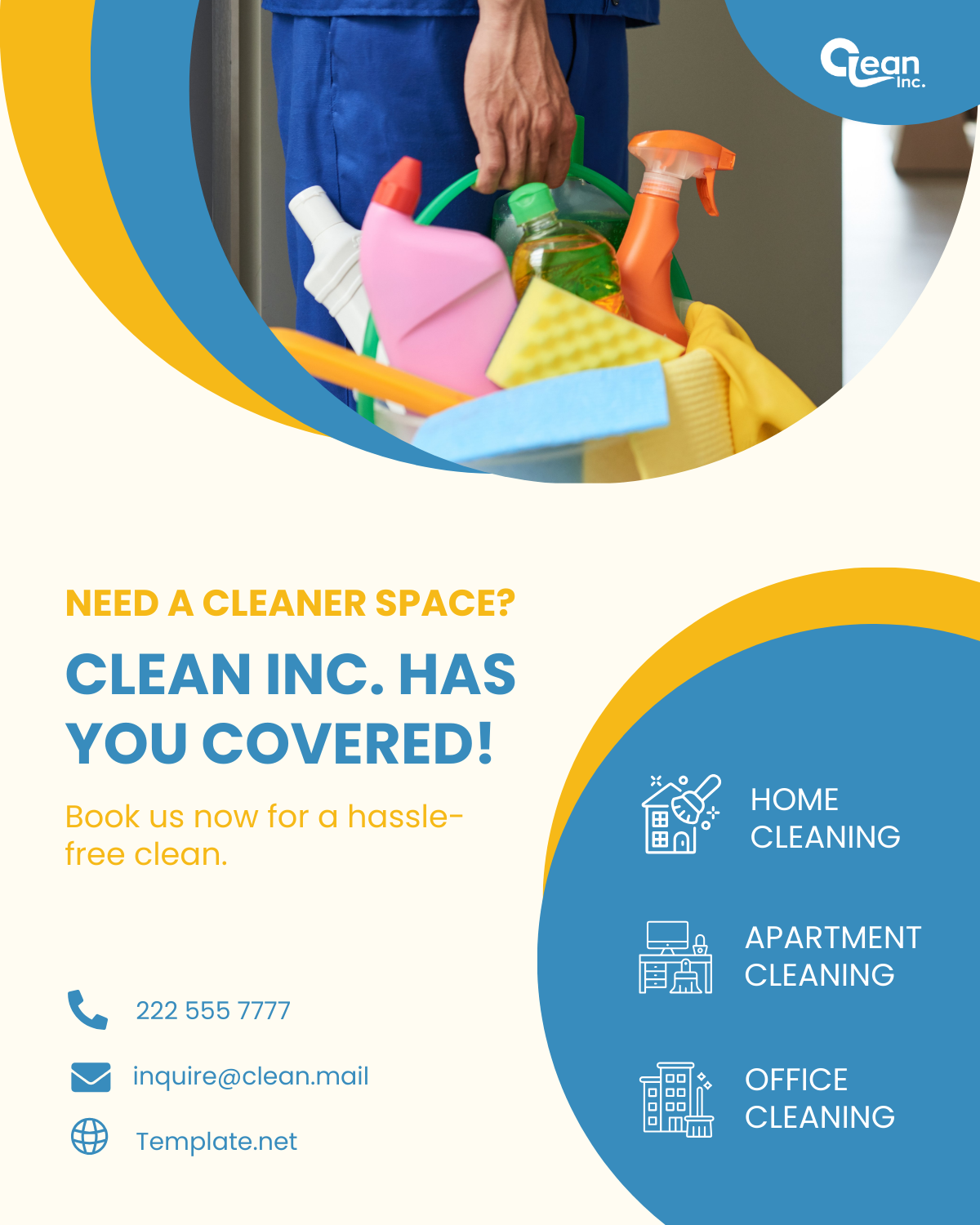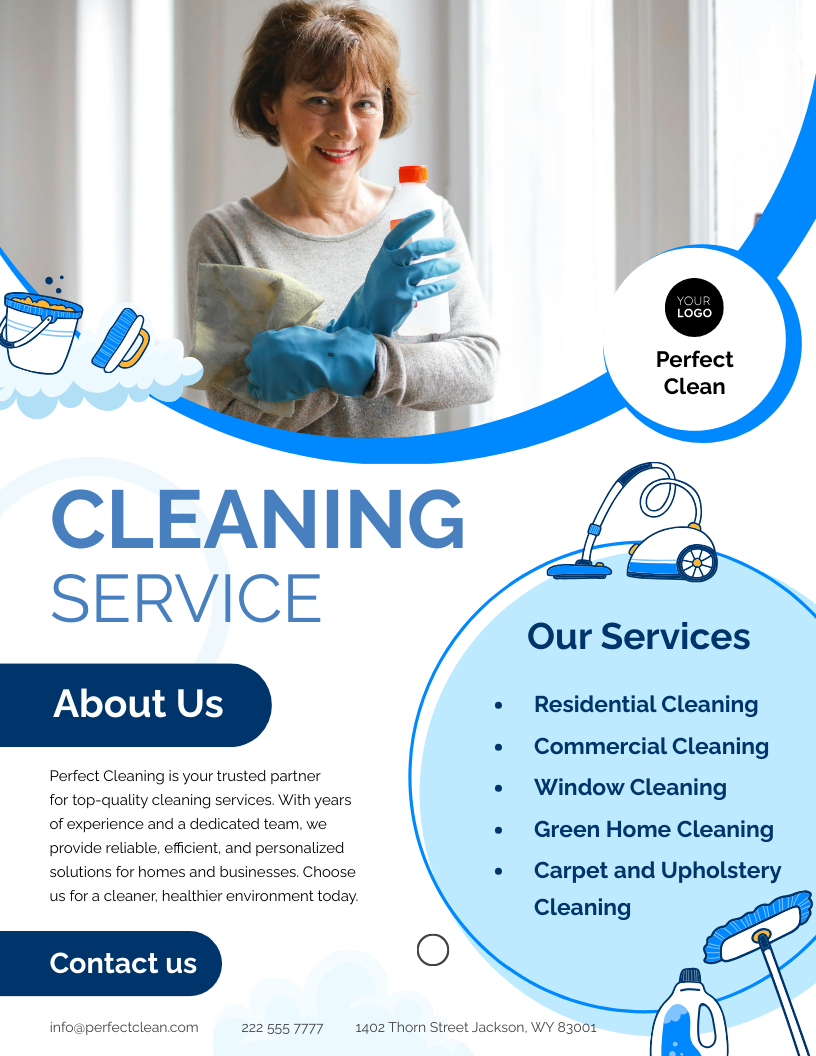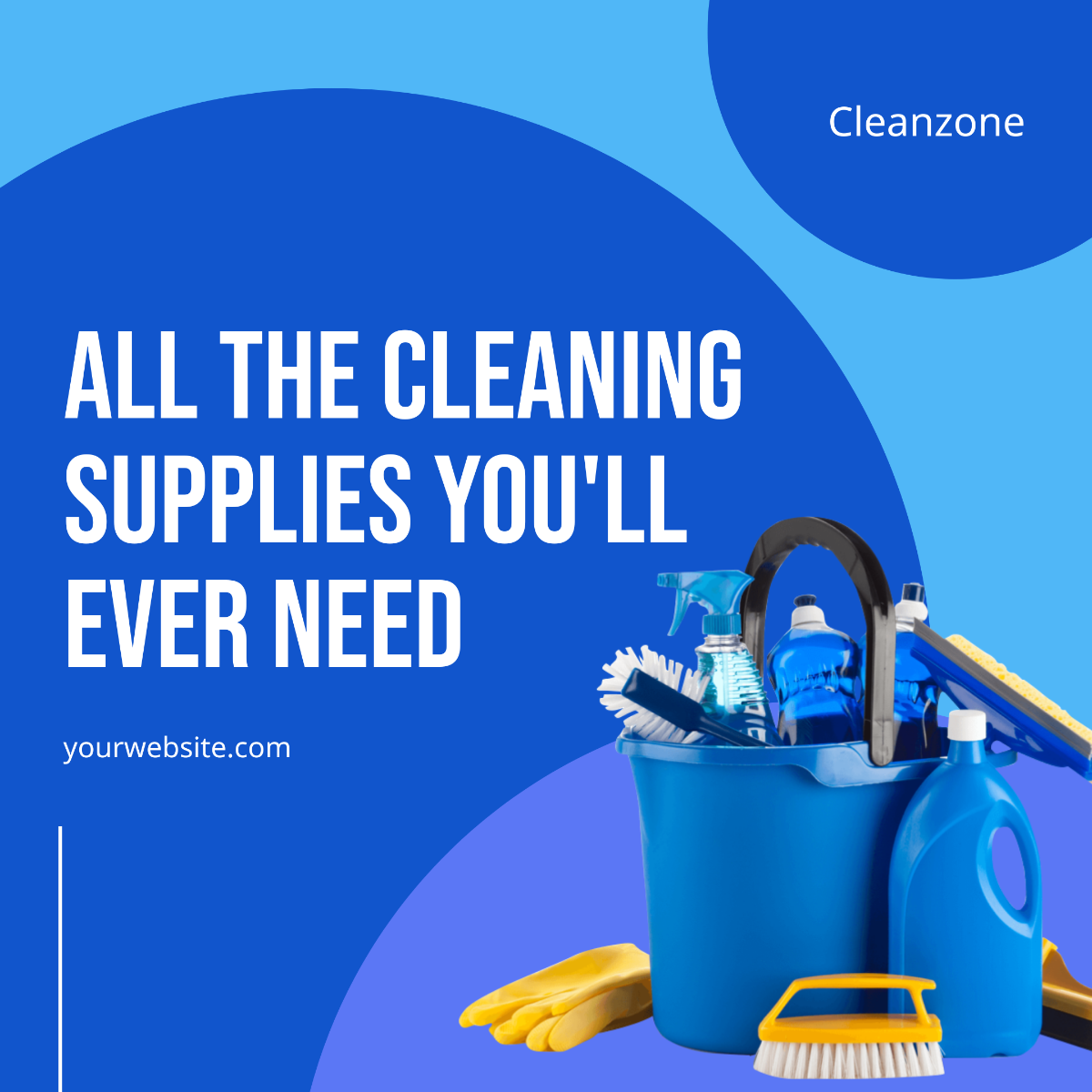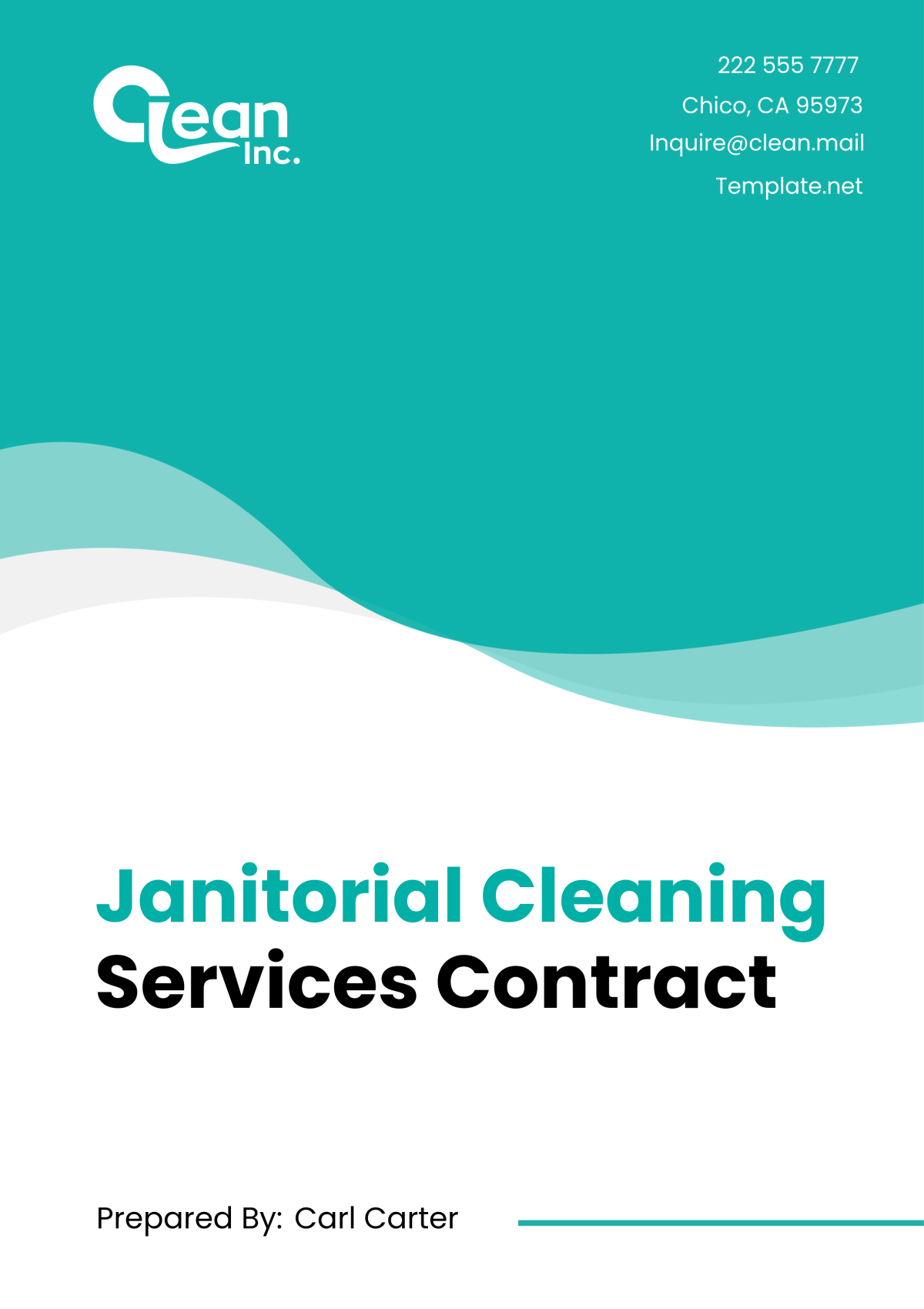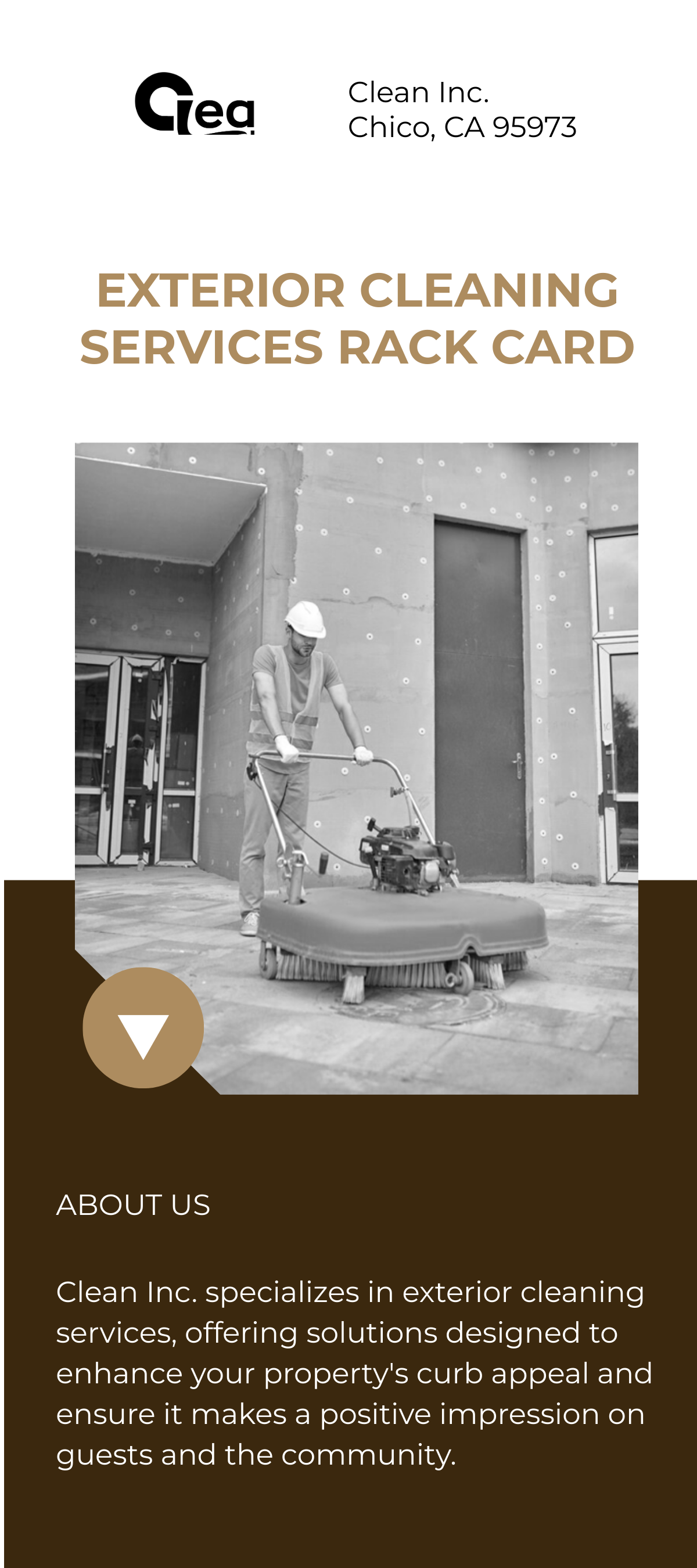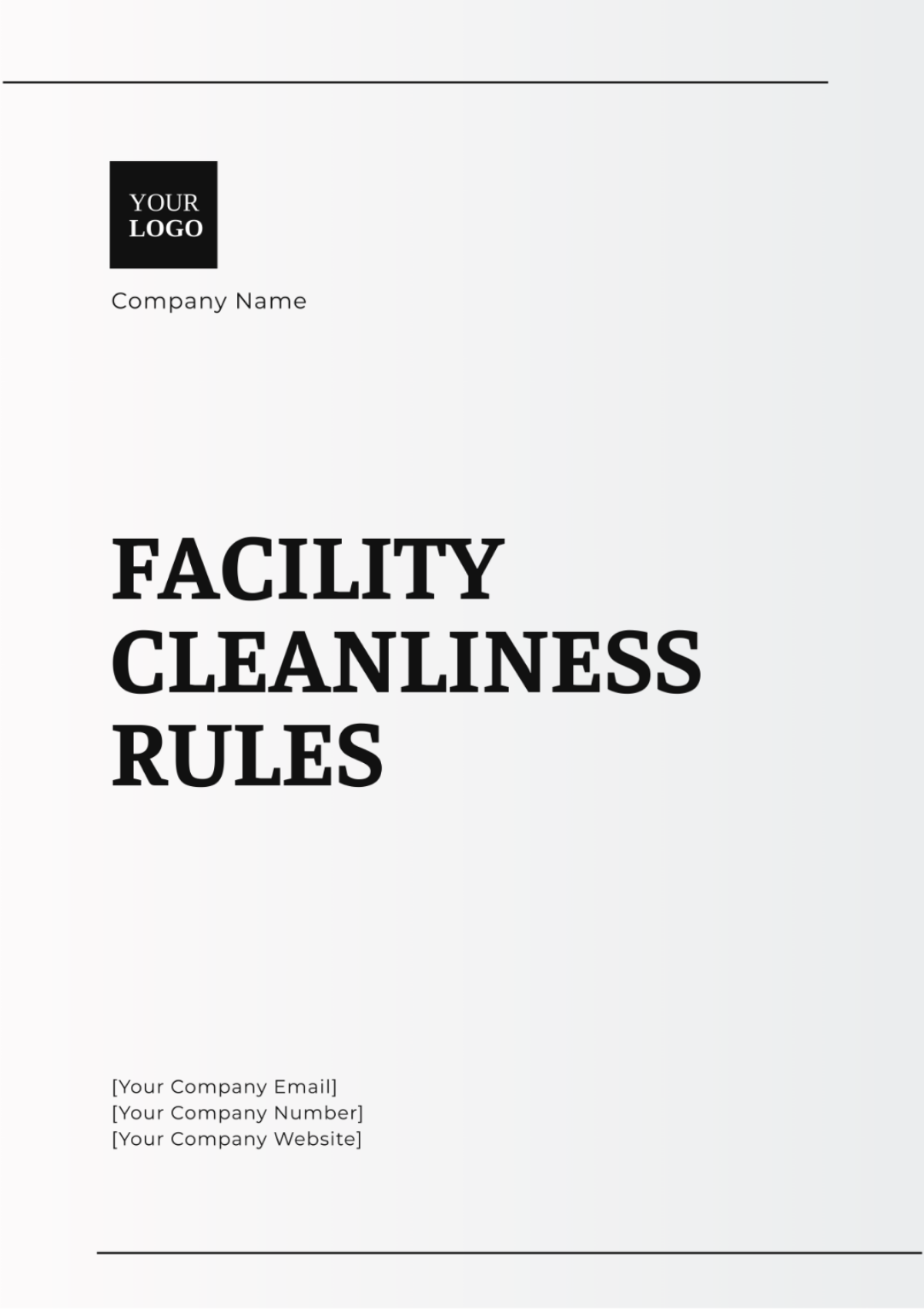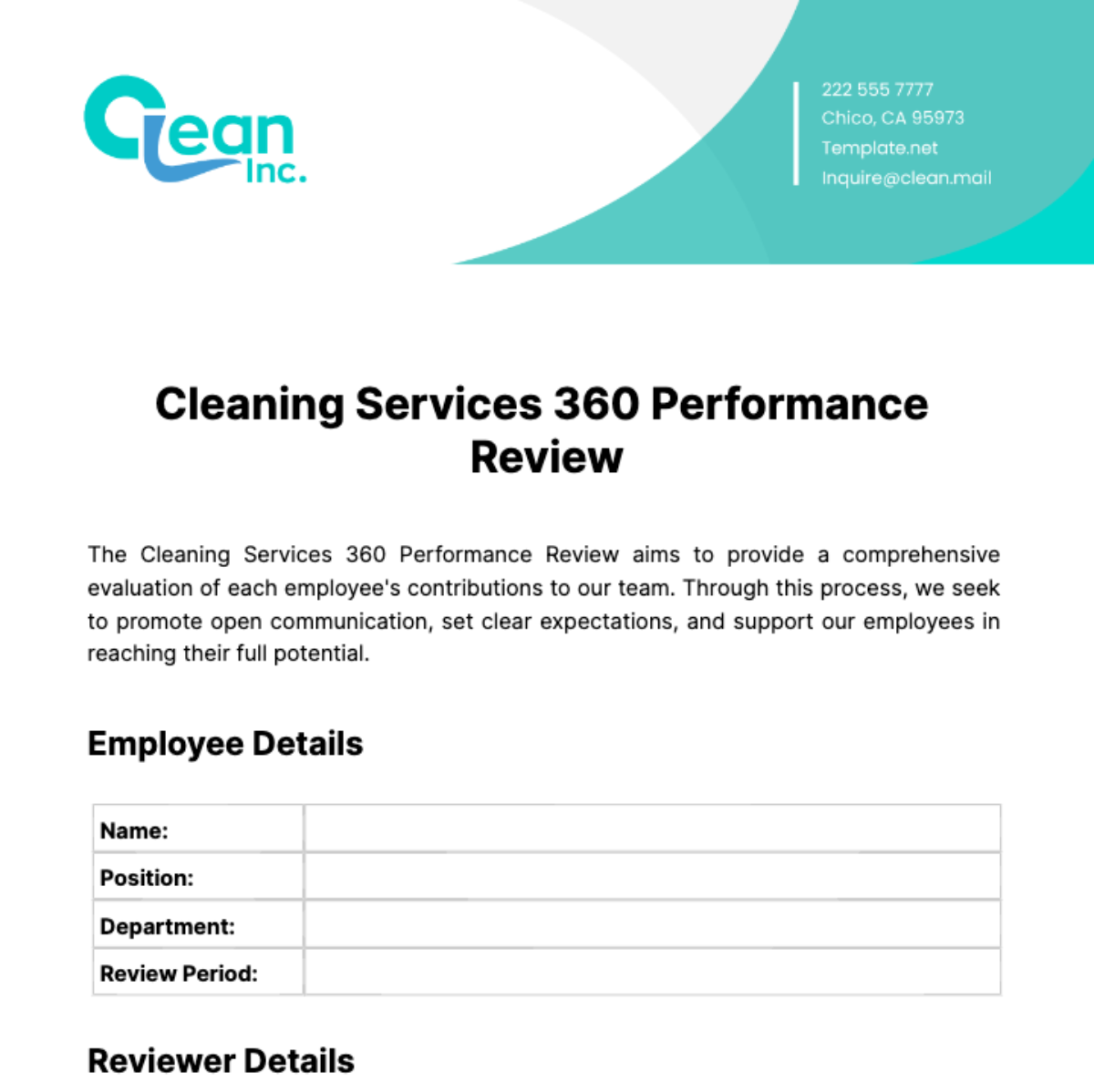Cleaning Business Process Document
I. Introduction
A. Purpose
The purpose of this Cleaning Business Process Document is to provide a comprehensive overview of the operational processes within [Your Company Name]. This document serves as a reference guide for employees, management, and stakeholders to understand the various cleaning processes, their execution, and the overall workflow. It aims to enhance efficiency, maintain consistency in service delivery, and ensure quality standards are met. By detailing each aspect of the cleaning business, we can ensure that everyone involved has a clear understanding of their roles and responsibilities, ultimately leading to improved service quality and client satisfaction.
B. Scope
This document covers the following aspects of [Your Company Name]'s cleaning business operations:
Overview of cleaning services offered
Detailed cleaning processes for different environments
Quality assurance and control measures
Health and safety protocols
Employee training and development
Customer feedback and complaint resolution
Equipment and supply management
The scope of this document extends to all cleaning operations performed by [Your Company Name], whether in residential, commercial, or specialized settings. It includes a thorough examination of the procedures that guide our employees in delivering exceptional cleaning services to clients.
C. Definitions
Cleaning Services: Tasks performed to remove dirt, allergens, and contaminants from various surfaces to maintain hygiene and cleanliness.
Quality Assurance: Processes in place to ensure that cleaning services meet established standards.
Health and Safety Protocols: Guidelines designed to protect employees and clients from potential hazards during cleaning operations.
Eco-Friendly Cleaning: Cleaning methods that utilize environmentally friendly products and practices to minimize ecological impact.
II. Overview of Cleaning Services Offered
A. Residential Cleaning Services
[Your Company Name] provides a variety of residential cleaning services tailored to meet the needs of homeowners. Our services are designed with flexibility in mind, allowing clients to choose options that best fit their lifestyle and cleaning requirements. The following services are included:
Routine Cleaning: Regular cleaning of homes on a weekly, bi-weekly, or monthly basis, including dusting, vacuuming, and sanitizing surfaces. This service can be customized to include specific areas that the client prioritizes, such as kitchens or bathrooms.
Deep Cleaning: Comprehensive cleaning that covers areas typically neglected in routine cleaning, such as carpets, upholstery, and behind appliances. This service is often recommended for homes that have not been cleaned for an extended period or in preparation for special events.
Move-In/Move-Out Cleaning: Specialized cleaning for properties during the transition of tenants, ensuring the space is spotless and ready for new occupants. This includes thorough cleaning of cabinets, appliances, and often, interior windows.
Residential Cleaning Services Summary Table
Service Type | Description | Frequency Options | Estimated Cost Range |
|---|---|---|---|
Routine Cleaning | Regular cleaning of all home areas | Weekly, Bi-Weekly, Monthly | $[80 - 150] per visit |
Deep Cleaning | Comprehensive cleaning of hard-to-reach areas | As Needed | $[200 - 400] |
Move-In/Move-Out Cleaning | Specialized cleaning for new tenants or vacating residents | As Needed | $[150 - 300] |
B. Commercial Cleaning Services
The commercial cleaning services offered by [Your Company Name] are designed for various businesses and organizations, ensuring a clean and welcoming environment for employees and clients. Our commitment to professionalism and thoroughness sets us apart in the commercial cleaning sector. Services include:
Office Cleaning: Regular cleaning of office spaces, including workstations, restrooms, break rooms, and common areas. Our staff pays special attention to high-touch areas, ensuring they are sanitized and free of germs.
Post-Construction Cleaning: Cleaning services specifically aimed at removing debris and dust left after construction or renovation projects. This service is essential for preparing newly built or renovated spaces for occupancy.
Industrial Cleaning: Specialized cleaning for factories, warehouses, and industrial facilities, focusing on maintaining a safe and clean working environment. Our team is trained to handle industrial-grade equipment and safety protocols.
Commercial Cleaning Services Summary Table
Service Type | Description | Frequency Options | Estimated Cost Range |
|---|---|---|---|
Office Cleaning | Routine cleaning of office environments | Daily, Weekly | $[300 - 800] monthly |
Post-Construction Cleaning | Detailed cleaning post-construction | As Needed | $[500 - 1,200] |
Industrial Cleaning | Specialized cleaning for industrial settings | Weekly, Monthly | $[800 - 1,500] |
C. Specialized Cleaning Services
[Your Company Name] also offers specialized cleaning services to address unique needs. These services are designed to meet specific challenges that regular cleaning may not adequately address. They include:
Carpet and Upholstery Cleaning: Deep cleaning techniques to remove stains, dirt, and allergens from carpets and furniture. We utilize advanced steam cleaning equipment that ensures thorough cleaning and rapid drying.
Window Cleaning: Interior and exterior window cleaning to enhance visibility and aesthetics. This service includes the cleaning of frames, sills, and tracks for a complete service.
Green Cleaning: Eco-friendly cleaning services using environmentally safe products to reduce the ecological impact of cleaning operations. This service appeals to clients who are environmentally conscious and seek sustainable solutions.
Specialized Cleaning Services Summary Table
Service Type | Description | Frequency Options | Estimated Cost Range |
|---|---|---|---|
Carpet and Upholstery Cleaning | Deep cleaning of carpets and furniture | As Needed | $[100 - 250] |
Window Cleaning | Thorough cleaning of interior and exterior windows | Bi-Annually, Annually | $[80 - 200] |
Green Cleaning | Use of eco-friendly products for cleaning | As Needed | $[100 - 300] |
III. Cleaning Processes
A. Residential Cleaning Process
1. Preparation
Before initiating any cleaning service, the following preparatory steps are taken:
Client Consultation: Discussing client needs, expectations, and specific areas of focus. During this consultation, any allergies or preferences regarding cleaning products are noted to customize the service effectively.
Site Assessment: Evaluating the home layout to identify high-traffic areas, special requests, and any potential hazards. This assessment allows our cleaning teams to prioritize their efforts effectively.
2. Cleaning Execution
The execution of residential cleaning services involves several detailed steps:
Dusting and Surface Cleaning:
Start from the top (ceiling fans, light fixtures) and work downwards to avoid re-dusting surfaces. This method ensures that dust and debris fall onto areas that will be cleaned later in the process.
Use microfiber cloths and appropriate cleaning solutions for different surfaces. Microfiber cloths are particularly effective in trapping dust and allergens, promoting a healthier indoor environment.
Floor Cleaning:
Vacuum carpets thoroughly, paying special attention to edges and corners where dirt tends to accumulate. Using HEPA-filtered vacuums can significantly reduce airborne allergens.
Mop hard floors with a suitable cleaner to remove dirt and disinfect. We employ eco-friendly cleaning solutions that are effective yet safe for children and pets.
Kitchen Cleaning:
Clean countertops, sinks, and appliances (inside and out) to ensure a hygienic cooking environment. Special attention is given to areas prone to bacteria, such as sink drains and cutting boards.
Sanitize high-touch areas, such as cabinet handles and light switches, to minimize the spread of germs.
Bathroom Cleaning:
Scrub and disinfect toilets, sinks, showers, and tubs to eliminate harmful bacteria. We use specific products designed for different materials to ensure no damage occurs.
Ensure mirrors and glass surfaces are streak-free, enhancing the overall appearance of the bathroom.
3. Quality Control
To maintain high standards, [Your Company Name] implements a quality control process that includes:
Post-Cleaning Inspection: Supervisors perform inspections to ensure all tasks are completed to standard. This involves checking key areas that are often missed during cleaning.
Client Feedback: Clients are encouraged to provide feedback post-service, allowing for continuous improvement. This feedback is analyzed to identify trends and make necessary adjustments to cleaning procedures.
B. Commercial Cleaning Process
1. Planning and Scheduling
For commercial clients, planning and scheduling are crucial:
Client Consultation: Understand the specific cleaning needs and frequency (daily, weekly, or monthly). This includes determining the best times to clean so that it does not interfere with normal business operations.
Customized Cleaning Plan: Develop a tailored cleaning schedule that minimizes disruption to business operations. This plan outlines the specific tasks to be performed during each visit.
2. Cleaning Execution
The cleaning execution process for commercial spaces involves:
Routine Cleaning:
Clean and disinfect desks, conference rooms, and communal areas to maintain a healthy work environment. Special attention is paid to electronic equipment, such as keyboards and telephones, which are common breeding grounds for germs.
Floor Maintenance:
Use appropriate methods for different flooring types (e.g., stripping and waxing for vinyl, carpet cleaning for carpets) to maintain appearance and durability. Regular maintenance helps prolong the life of flooring materials, ultimately saving clients money.
Implement a regular maintenance schedule for high-traffic areas to prevent wear and tear. This may include frequent spot cleaning and buffing to keep floors looking their best.
Restroom Sanitation:
Focus on thorough cleaning and disinfecting of restrooms, which are critical in maintaining hygiene. This includes ensuring that supplies such as toilet paper, soap, and paper towels are always stocked.
Specialized Cleaning:
Perform specialized tasks such as window cleaning and carpet care as needed. This may be scheduled after-hours to minimize disruption to the business.
3. Quality Control
Similar to residential cleaning, the quality control process in commercial cleaning includes:
Service Audits: Conduct regular audits to ensure compliance with cleaning standards. This may involve surprise inspections to assess service quality.
Client Review Meetings: Schedule periodic meetings with clients to review service quality and discuss any changes in needs or concerns. This ongoing communication ensures that client expectations are met consistently.
C. Specialized Cleaning Process
1. Carpet and Upholstery Cleaning Process
The carpet and upholstery cleaning process includes:
Pre-Cleaning Assessment: Inspect carpets and upholstery for stains, wear, and specific cleaning needs. This assessment guides the selection of cleaning methods and products.
Stain Treatment: Apply specialized stain removal treatments to target specific stains before the main cleaning. This step is crucial to achieve the best possible results.
Deep Cleaning:
Utilize hot water extraction or steam cleaning methods to thoroughly cleanse carpets and upholstery. This method effectively removes deep-seated dirt and allergens.
Allow carpets and upholstery to dry adequately to prevent mold and mildew growth. Proper ventilation and fans may be used to expedite the drying process.
2. Window Cleaning Process
The window cleaning process involves:
Preparation: Gather necessary tools and materials, including squeegees, scrubbers, and eco-friendly cleaning solutions.
Cleaning:
Start with the exterior windows, using extension poles for hard-to-reach areas. This ensures that all surfaces are addressed safely and thoroughly.
Follow with interior window cleaning, ensuring no streaks are left behind. The use of microfiber cloths helps achieve a polished finish.
3. Green Cleaning Process
The green cleaning process at [Your Company Name] includes:
Eco-Friendly Product Selection: Use biodegradable and non-toxic cleaning products that are safe for both the environment and human health. We prioritize suppliers who share our commitment to sustainability.
Training: Ensure all staff are trained in green cleaning practices, understanding the importance of sustainability in their work. Ongoing training sessions are held to keep employees informed about new eco-friendly products and techniques.
Waste Management: Implement waste reduction strategies, including recycling and proper disposal of hazardous materials. This commitment to sustainability aligns with [Your Company Name]'s core values and attracts environmentally conscious clients.
IV. Quality Assurance and Control
A. Quality Standards
[Your Company Name] adheres to stringent quality standards to ensure the delivery of exceptional cleaning services. These standards include:
Service Consistency: Maintain consistency in service delivery across all locations and services. This involves regular communication and training for cleaning staff.
Client Satisfaction Metrics: Establish metrics to measure client satisfaction, including response times, service effectiveness, and overall satisfaction scores. Surveys will be sent to clients after each service to gather feedback and improve our offerings.
B. Quality Control Processes
The quality control processes employed by [Your Company Name] encompass:
Inspections and Audits: Conduct routine inspections and audits of cleaning operations to ensure compliance with established standards. This involves scheduled and unscheduled visits to evaluate service quality.
Corrective Actions: Implement corrective actions immediately when standards are not met. Staff training and review meetings are conducted to address deficiencies and prevent recurrence.
C. Performance Measurement
Performance measurement is an integral part of our quality assurance program. This includes:
Key Performance Indicators (KPIs): Develop KPIs to track service delivery metrics, such as the number of completed jobs, client satisfaction ratings, and employee performance.
Continuous Improvement Programs: Implement programs that encourage feedback from employees and clients, focusing on areas for improvement. Regular team meetings will be held to discuss feedback and potential changes to processes.
V. Health and Safety Protocols
A. Workplace Safety Policies
[Your Company Name] prioritizes the health and safety of its employees and clients. Our workplace safety policies include:
Personal Protective Equipment (PPE): Ensure that all employees are provided with necessary PPE, such as gloves, masks, and goggles, to protect against potential hazards. Training on the proper use and disposal of PPE is also conducted.
Safety Training: Conduct regular safety training sessions to educate employees about best practices and emergency procedures. These sessions cover topics such as chemical safety, equipment handling, and emergency response.
B. Chemical Safety Guidelines
To minimize health risks, [Your Company Name] follows strict chemical safety guidelines:
Material Safety Data Sheets (MSDS): Maintain an up-to-date MSDS for all cleaning products used. This provides essential information on handling, storage, and emergency measures related to chemicals.
Proper Storage and Disposal: Ensure all chemicals are stored safely and disposed of according to local regulations. Staff are trained to identify hazardous materials and handle them appropriately.
C. Emergency Response Procedures
In case of emergencies, [Your Company Name] has established procedures, including:
Incident Reporting: Encourage employees to report any incidents or near misses to management immediately. An incident report form is available for documentation purposes.
Emergency Contacts: Maintain a list of emergency contacts and procedures readily accessible to all employees. This includes contact information for local emergency services, poison control, and internal management.
VI. Employee Training and Development
A. Orientation and Onboarding
New employees undergo a comprehensive orientation and onboarding process that includes:
Introduction to Company Policies: Review of [Your Company Name]'s policies, procedures, and culture. This ensures that all employees understand their responsibilities and the company's expectations from the start.
Hands-On Training: Provide hands-on training for cleaning techniques, equipment use, and safety protocols. This practical training is crucial for building employee confidence and competence.
B. Ongoing Training Programs
To keep employees updated on industry standards and practices, [Your Company Name] offers ongoing training programs:
Regular Skills Assessments: Conduct regular assessments to identify areas where additional training may be needed. This helps ensure that all employees maintain high standards of cleaning and customer service.
Advanced Training Opportunities: Offer advanced training sessions in specialized areas, such as green cleaning, stain removal, and customer service skills. These sessions are designed to enhance employee skills and career growth.
C. Performance Evaluations
Performance evaluations are conducted regularly to assess employee performance, including:
Feedback Sessions: One-on-one feedback sessions to discuss performance, strengths, and areas for improvement. These sessions foster open communication and encourage professional development.
Recognition Programs: Implement recognition programs to reward high-performing employees. This may include employee of the month awards, bonuses, or other incentives to encourage excellence.
VII. Customer Feedback and Complaint Resolution
A. Feedback Collection Methods
[Your Company Name] employs various methods to collect client feedback effectively:
Post-Service Surveys: Send out surveys via email to clients after each service to gather opinions on quality, timeliness, and overall satisfaction. The surveys will include both quantitative ratings and open-ended questions for qualitative insights.
Online Reviews: Encourage clients to leave reviews on platforms like Google and Yelp to increase visibility and credibility. Monitoring online reviews also provides valuable insights into client perceptions and areas for improvement.
Direct Communication: Encourage clients to share their feedback directly with management through phone calls or emails. This direct line of communication can often yield immediate insights and resolutions.
Feedback Collection Methods Summary Table
Method | Description | Frequency | Target Response Rate |
|---|---|---|---|
Post-Service Surveys | Gather client opinions post-service | After each service | [70%] |
Online Reviews | Encourage reviews on platforms | Ongoing | [50%] |
Direct Communication | Facilitate direct client feedback | Ongoing | [60%] |
B. Complaint Resolution Process
The complaint resolution process is crucial for maintaining client relationships:
Immediate Acknowledgment: Acknowledge receipt of complaints within [24 hours] through email or phone call. This prompt response reassures clients that their concerns are being taken seriously.
Investigation: Conduct a thorough investigation to understand the issue, including interviewing staff involved and reviewing service records. Gathering all relevant information is critical to ensure a fair resolution.
Resolution Communication: Communicate the outcome of the investigation to the client, detailing any corrective actions taken and measures implemented to prevent future occurrences. This transparency builds trust and reinforces the company’s commitment to quality.
C. Continuous Feedback Improvement
To enhance the feedback process, [Your Company Name] continuously seeks improvement through:
Analyzing Feedback Trends: Regularly review feedback data to identify common issues and implement improvements. This includes tracking the frequency of complaints and the effectiveness of resolutions.
Incorporating Client Suggestions: Actively seek and incorporate client suggestions into service enhancements. This client-centric approach demonstrates that [Your Company Name] values client input and is committed to continuous improvement.
VIII. Equipment and Supply Management
A. Equipment Inventory Management
Effective management of cleaning equipment is crucial for operational efficiency. This involves:
Regular Inventory Checks: Conduct monthly inventory checks to ensure all equipment is accounted for and in good condition. This practice helps identify any missing or damaged equipment and allows for timely replacements.
Maintenance Schedule: Establish a routine maintenance schedule to prolong equipment lifespan and prevent breakdowns. This may include routine servicing of vacuum cleaners, buffers, and other machinery.
B. Supply Ordering and Control
To ensure the availability of necessary cleaning supplies, [Your Company Name] implements:
Supply Ordering System: Create a streamlined ordering system to manage supplies efficiently. This system tracks usage patterns and generates automatic reorder requests when stock levels fall below a certain threshold.
Supplier Relationships: Maintain strong relationships with suppliers to negotiate favorable terms and ensure timely delivery of high-quality products. Regular reviews of supplier performance will help ensure continued alignment with [Your Company Name]'s values.
C. Eco-Friendly Product Sourcing
In line with [Your Company Name]'s commitment to sustainability, we prioritize eco-friendly products by:
Researching Suppliers: Evaluate suppliers based on their commitment to sustainability and the environmental impact of their products. We seek to partner with companies that align with our values.
Training Staff on Product Use: Provide training to staff on the benefits and proper use of eco-friendly products to ensure effective cleaning without compromising environmental integrity.
